Omron RFID Business Development Department V720HMC75 Electromagnetic Inductive RFID module User Manual
Omron Corporation, RFID Business Development Department Electromagnetic Inductive RFID module
User manual
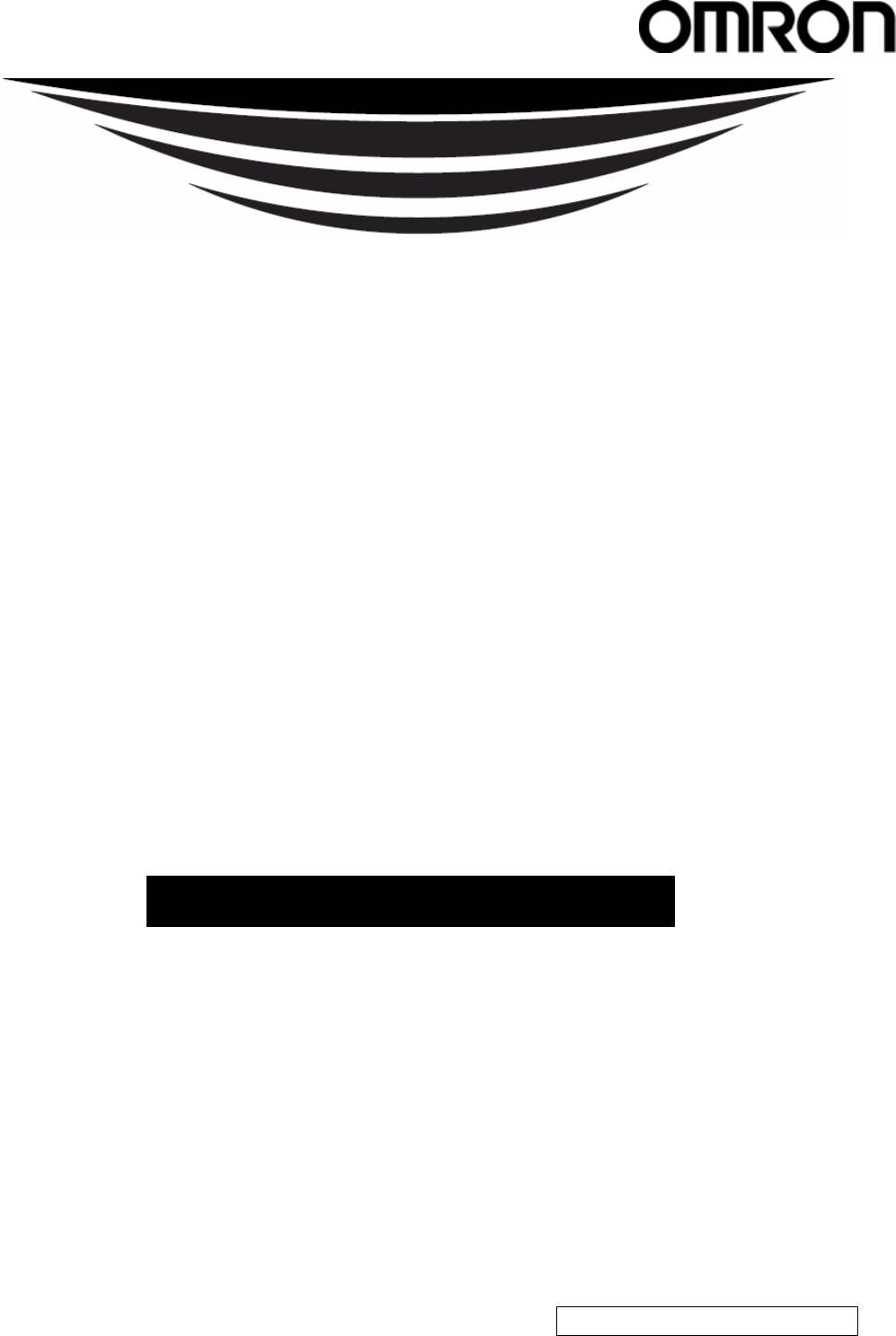
Electromagnetic Inductive
RFID System
V720-series
User’s Manual
PCB Read/ Write Modules
V720S-HMC75
Manual Number SRFM-014A
Omron Corporation
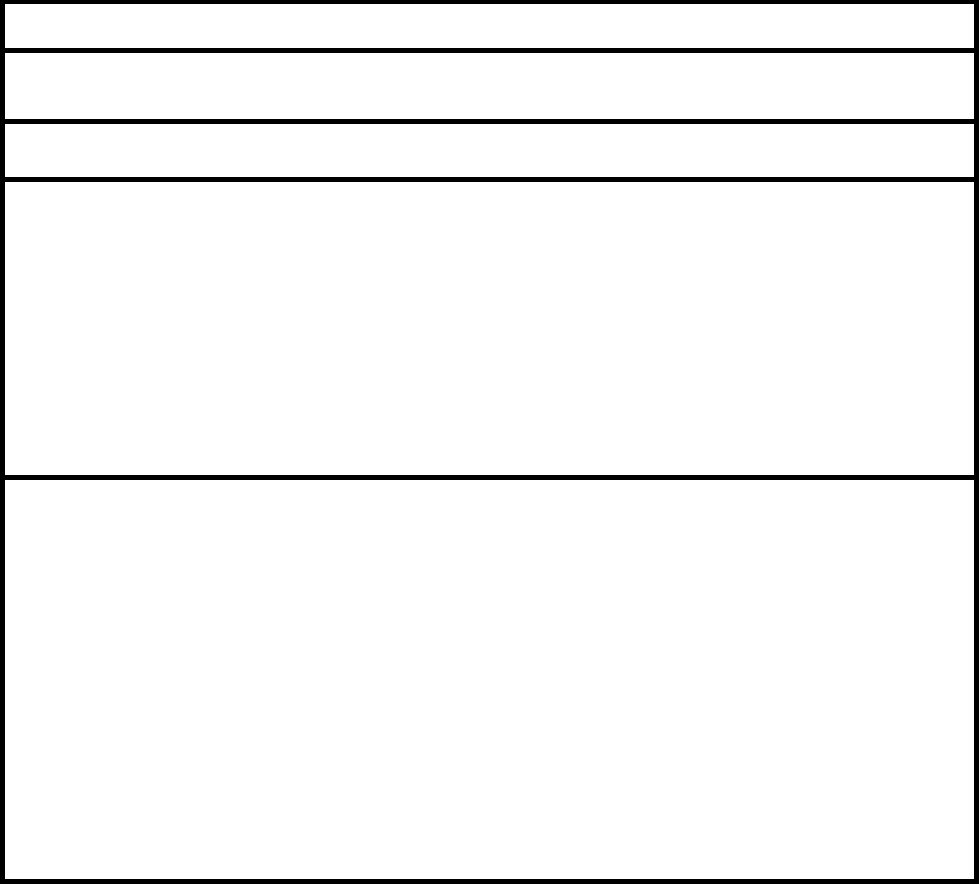
ii
About this Manual:
This manual describes the installation and operation of the V720-series Electromagnetic Inductive
RFID System (V720S-HMC75) and includes the sections described below.
Please read this manual carefully and be sure you understand the information provided before
attempting to install and operate the System.
Section 1 provides the features of the V720S-HMC75.
Section 2 provides the specifications and performance characteristics of the V720S-HMC75.
Section 3 provides the functions and operations of the V720S-HMC75.
Section 4 provides the communications functions and provides details on communications–related
data and commands.
Section 5 provides the information of characteristics data.
Precautions
Read and Understand this Manual
Please read and understand this manual before using the products. Please consult your OMRON
representative if you have any questions or comments.
Warranty, Limitations of Liability
< WARRANTY >
OMRON's exclusive warranty is that the products are free from defects in materials and
workmanship for a period of one year (or other period if specified) from date of sale by OMRON.
OMRON MAKES NO WARRANTY OR REPRESENTATION, EXPRESS OR IMPLIED, REGARDING NON-INFRINGEMENT,
MERCHANTABILITY, OR FITNESS FOR PARTICULAR PURPOSE OF THE PRODUCTS. ANY BUYER OR USER
ACKNOWLEDGES THAT THE BUYER OR USER ALONE HAS DETERMINED THAT THE PRODUCTS WILL SUITABLY MEET
THE REQUIREMENTS OF THEIR INTENDED USE. OMRON DISCLAIMS ALL OTHER WARRANTIES, EXPRESS OR
IMPLIED.
< LIMITATIONS OF LIABILITY >
OMRON SHALL NOT BE RESPONSIBLE FOR SPECIAL, INDIRECT, OR CONSEQUENTIAL DAMAGES, LOSS OF PROFITS
OR COMMERCIAL LOSS IN ANY WAY CONNECTED WITH THE PRODUCTS, WHETHER SUCH CLAIM IS BASED ON
CONTRACT, WARRANTY, NEGLIGENCE, OR STRICT LIABILITY.
In no event shall the responsibility of OMRON for any act exceed the individual price of the
product on which liability is asserted.
IN NO EVENT SHALL OMRON BE RESPONSIBLE FOR WARRANTY, REPAIR, OR OTHER CLAIMS REGARDING THE
PRODUCTS UNLESS OMRON'S ANALYSIS CONFIRMS THAT THE PRODUCTS WERE PROPERLY HANDLED, STORED,
INSTALLED, AND MAINTAINED AND NOT SUBJECT TO CONTAMINATION, ABUSE, MISUSE, OR INAPPROPRIATE
MODIFICATION OR REPAIR.
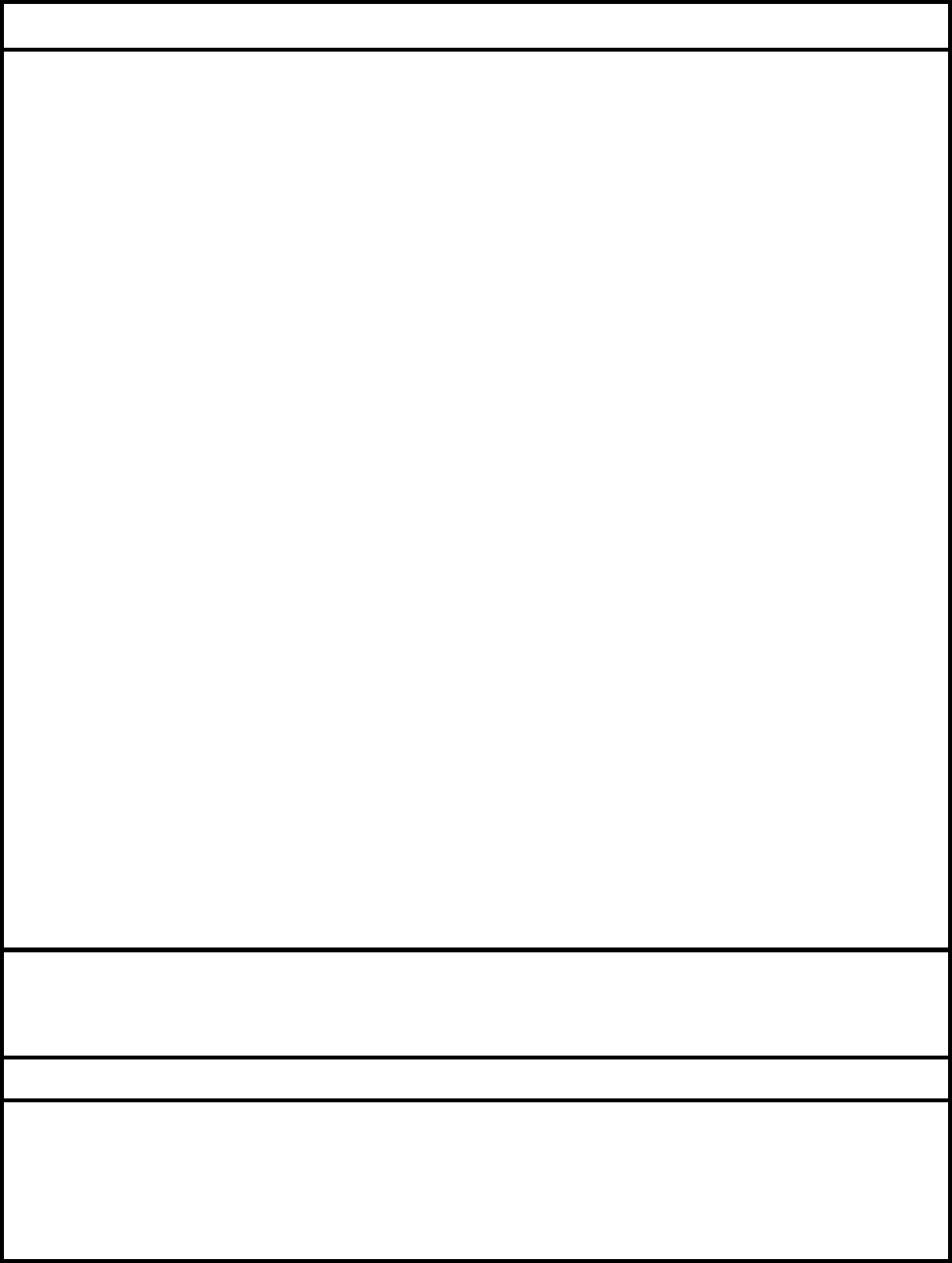
iii
Application Considerations
< SUITABILITY FOR USE >
OMRON shall not be responsible for conformity with any standards, codes, or regulations that
apply to the combination of the products in the customer's application or use of the products.
At the customer's request, OMRON will provide applicable third party certification documents
identifying ratings and limitations of use that apply to the products. This information by
itself is not sufficient for a complete determination of the suitability of the products in
combination with the end product, machine, system, or other application or use.
The following are some examples of applications for which particular attention must be given.
This is not intended to be an exhaustive list of all possible uses of the products, nor is it
intended to imply that the uses listed may be suitable for the products:
z Outdoor use, uses involving potential chemical contamination or electrical interference,
or conditions or uses not described in this manual.
z Nuclear energy control systems, combustion systems, railroad systems, aviation systems,
medical equipment, amusement machines, vehicles, safety equipment, and installations
subject to separate industry or government regulations.
z Systems, machines, and equipment that could present a risk to life or property.
Please know and observe all prohibitions of use applicable to the products.
NEVER USE THE PRODUCTS FOR AN APPLICATION INVOLVING SERIOUS RISK TO LIFE OR PROPERTY WITHOUT
ENSURING THAT THE SYSTEM AS A WHOLE HAS BEEN DESIGNED TO ADDRESS THE RISKS, AND THAT THE OMRON
PRODUCTS ARE PROPERLY RATED AND INSTALLED FOR THE INTENDED USE WITHIN THE OVERALL EQUIPMENT
OR SYSTEM.
< PROGRAMMABLE PRODUCTS >
OMRON shall not be responsible for the user's programming of a programmable product, or any
consequence thereof.
Disclaimers
< PERFORMANCE DATA >
Performance data given in this manual is provided as a guide for the user in determining
suitability and does not constitute a warranty. It may represent the result of OMRON’s test
conditions, and the users must correlate it to actual application requirements. Actual
performance is subject to the OMRON Warranty and Limitations of Liability.
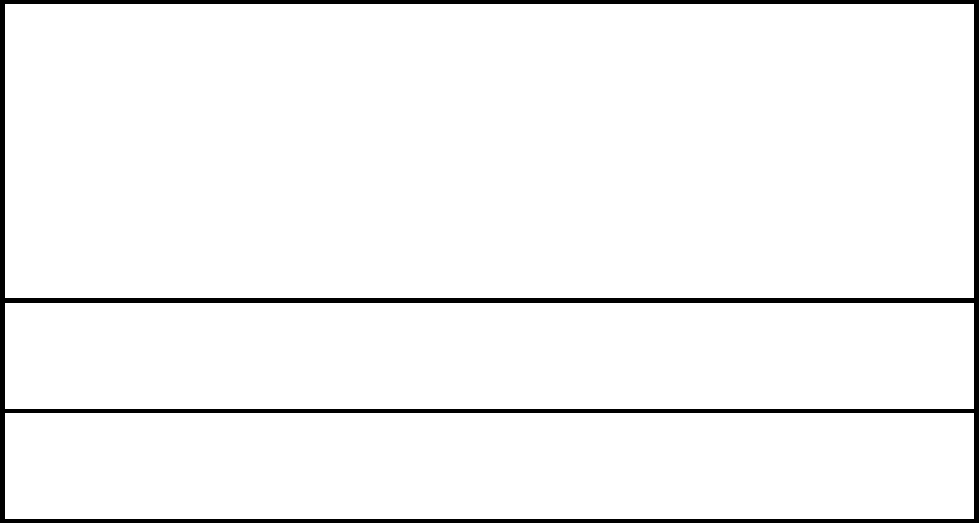
iv
< CHANGE IN SPECIFICATIONS >
Product specifications and accessories may be changed at any time based on improvements and
other reasons.
It is our practice to change model numbers when published ratings or features are changed, or
when significant construction changes are made. However, some specifications of the products
may be changed without any notice. When in doubt, special model numbers may be assigned to
fix or establish key specifications for your application on your request. Please consult with
your OMRON representative at any time to confirm actual specifications of purchased products.
< DIMENSIONS AND WEIGHTS >
Dimensions and weights are nominal and are not to be used for manufacturing purposes, even when
tolerances are shown.
< ERRORS AND OMISSIONS >
The information in this manual has been carefully checked and is believed to be accurate; however,
no responsibility is assumed for clerical, typographical, or proofreading errors, or omissions.
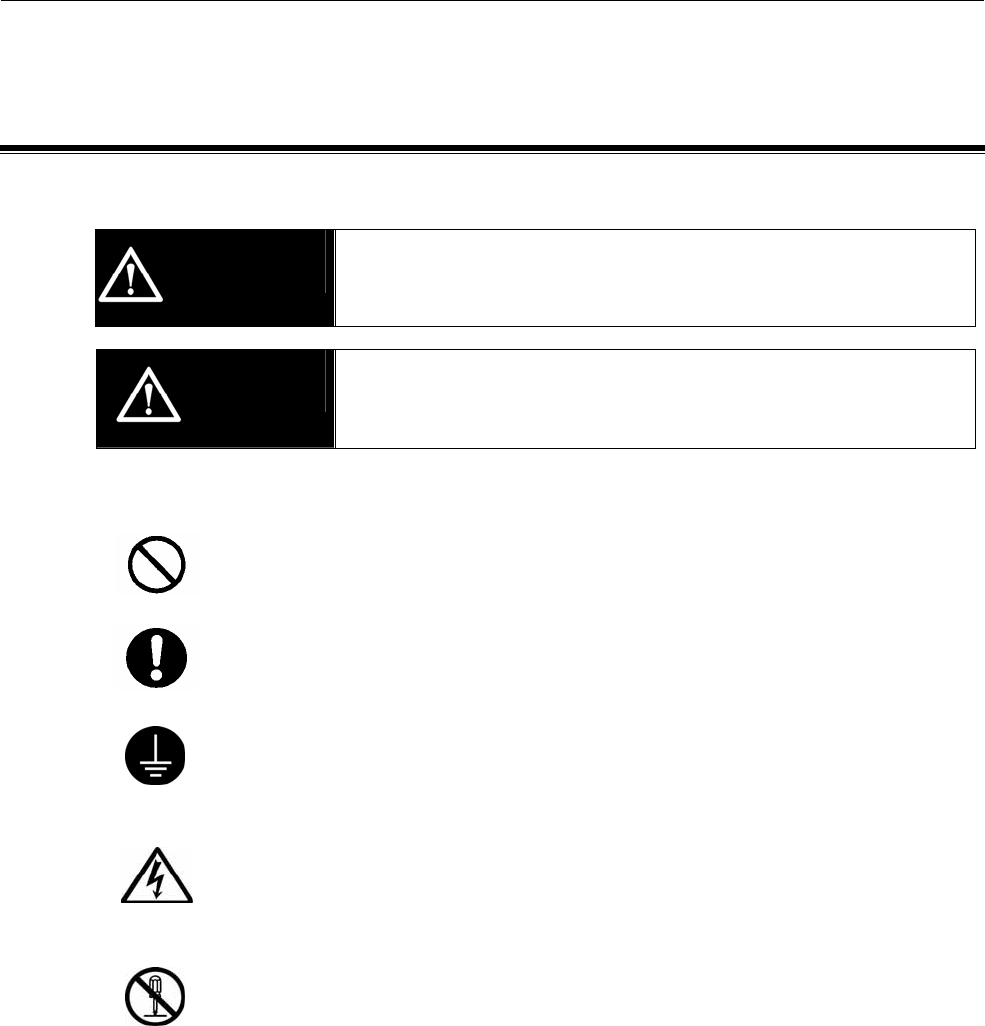
v
Safety Precautions
This chapter provides important information for the safe use of this product.
Ensure to read the information carefully before use.
In the safety precautions below, severity is categorized as either “WARNING” or “CAUTION”.
WARNING
Indicates a potentially hazardous situation which, if not avoided,
could result in death or serious injury.
Caution Indicates a potentially hazardous situation which, if not avoided,
may result in minor or moderate injury, or property damage.
Property damage refers to extended damage caused to
house/household goods or livestock/pets.
●Description of Symbols
Prohibition
Indicates an action or activity not permitted.
Observe strictly
Indicates the need to ensure the safe use of the product.
Ensure to establish a solid grounding
A label indicating that a device with a grounding terminal should always be
grounded.
Electric shock hazard
A notification that alerts the possibility of electric shock under certain
conditions.
Do not disassemble
A notification that prohibits disassembly when injuries caused by electric
shocks may result.
Please ensure that all cautions and prohibitions are adhered to, since non-compliance may lead
to serious injury or damage, in certain circumstances.
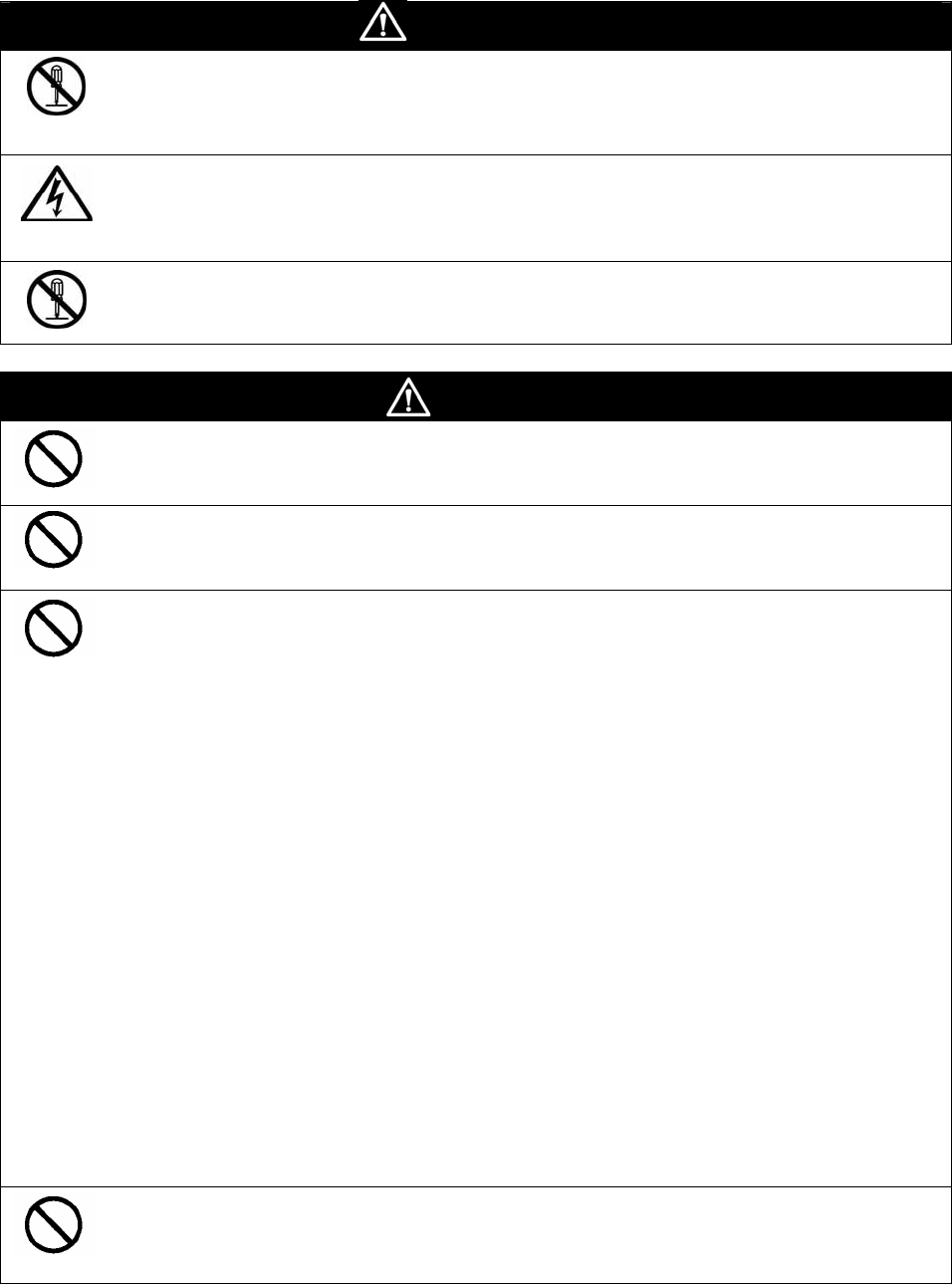
vi
WARNING
Never disassemble, repair, or modify the main unit and cables.
z Do not disassemble, repair, or modify this product. Doing so may result in electric shock, fire, or
personal injury.
Do not handle the device with wet hands. Do not touch the terminals while the
device is connected to the power supply.
z Electric shock hazard.
Do not allow the cables to be in contact with heaters.
z The cable sheaths may melt and the exposed wire may cause electric shock or fire.
Caution
Do not drop the device or apply physical shock.
z Doing so may result in personal injury or device damage.
Do not apply strong force to, or place heavy items on the device or cables.
z Doing so may deform or damage the device, resulting in electric shock or fire.
Use and store the product in an environment that is specified in the catalog or
operation manual.
z Failure to do so may cause failure of the device, electric shock, or fire. Do not use or store the
device in the following locations:
・ Locations that do not satisfy the specified operating conditions (-10°C to +55°C, 25%RH to
85%RH,non-condensing).
・ Locations that do not satisfy the specified storage conditions (-25°C to +65°C, 25%RH to
85%RH,non-condensing).
・ Locations where the Reader/Writer is exposed to direct sunlight.
・ Locations where the Reader/Writer is exposed to dust, corrosive gas, saline, or flammable
gas.
・ Locations where the Reader/Writer is exposed to direct heat.
・ Locations subject to condensation due to high humidity.
・ Locations subject to vibration or impact that exceed the limits outlined in the
specifications.
・ Locations where the device may be exposed to water, oil, or chemical agents. (This
applies to the models other than waterproof types.)
・ Outdoor
z Store and carry the product in packed state.
Do not allow the device or cables to be soused or exposed to water.
Doing so may result in electric shock, fire or failure of non-waterproof devices or
cables.
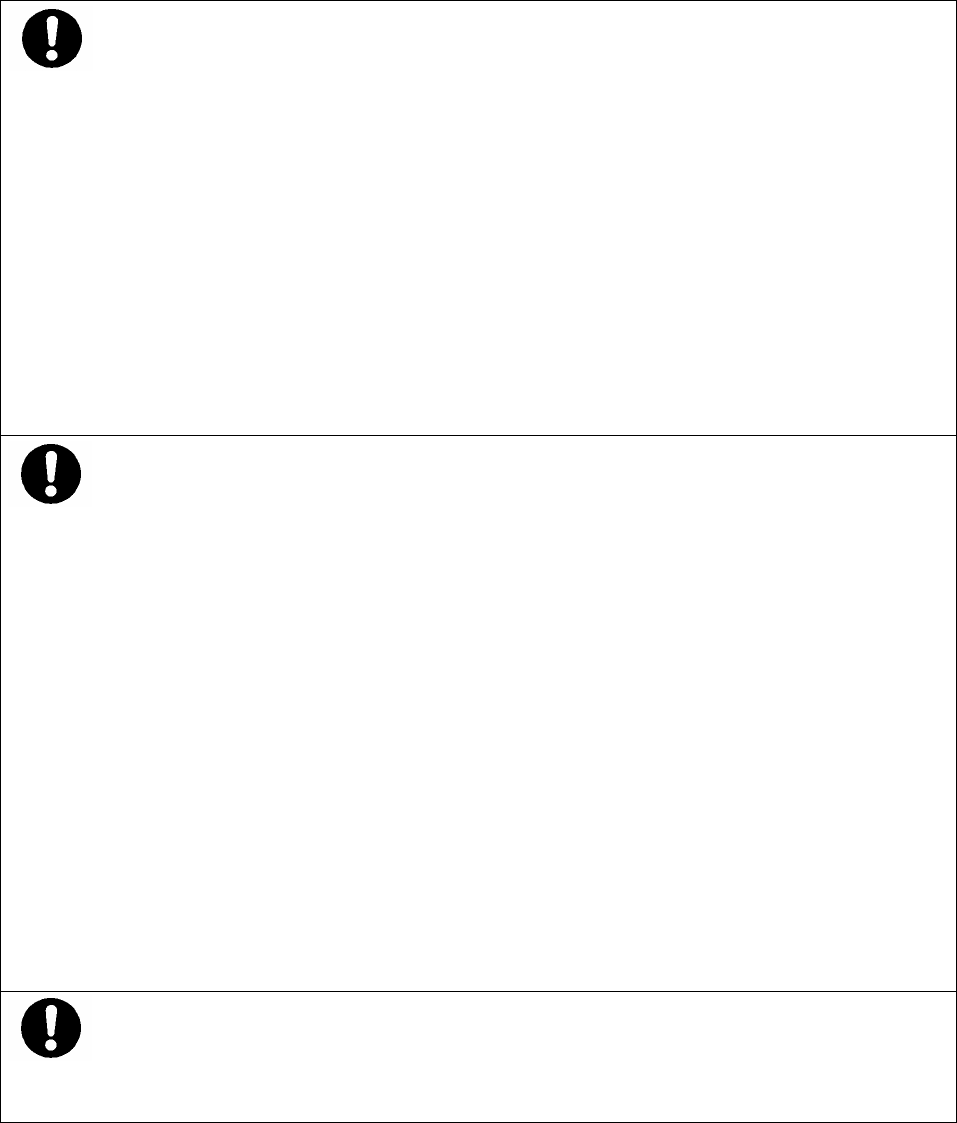
vii
To avoid interferences with other systems, adhere to the following items and check
them before using the product.
z The product uses a publicly available ISM frequency band of 13.56 MHz to
communicate with Tags. Some transceivers, motors, monitoring devices, power
supplies (power supply ICs), and other similar RFID systems may generate
noise, which cause radio interference and may affect communication with
Tags. If the product is required in the vicinity of these items, check for any
interferences prior to use.
z On the contrary, the system itself may affect radio station transmissions or
medical devices. Be cautious when using the system in the environments
where such effects might occur.
z To minimize noise effects, adhere to the following:
・Establish a Class D grounding (former Class 3 grounding) for metal objects
placed in the vicinity of the system.
・Keep cables away from those with high voltages or heavy currents.
Adhere to the following precautions:
・ When the product is unpacked, handle it on a conductive mat taking countermeasures
against static electricity by wearing earth band or anti-static gloves.
・ When treat the PCB by hand, grab the edge of the PCB.
・ Store and carry the product in packed state.
・ Do not remove the product from its packaging until it is time to use it. Do not leave
unpackaged product exposed.
・ Do not touch the semiconductors or patterns on the PCB.
・ Never put the product into the polyethylene or vinyl bag.
・ Do not apply more voltage or current to the connector terminals than the specified values.
Do not connect the output terminals to a power supply directly.
・ If an excessive external surge is supplied for your component, insert a filter or take other
countermeasures to absorb the surge at the power supply portion.
・ Attach or remove connectors only when the product is installed. This product is not suitable
for application that requires frequent removal or attachment of the connectors. Wire cables
carefully so that no force is applied to the connectors.
If the device fails or is exposed to water (non-waterproof devices or parts), or an
unusual smell, smoke, or sparks are detected, immediately refrain from using the
device and contact OMRON or a sales representative for service and repair.
z Continued use of the failed device may result in electric shock or fire.
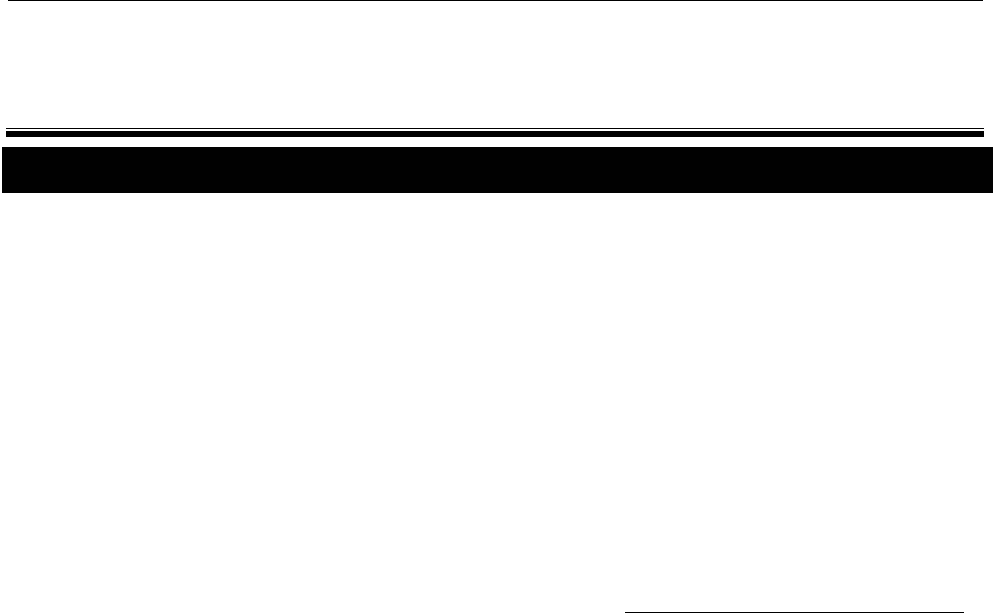
viii
Precautions
This chapter provides important information for international standards and copyright.
Ensure to read the information carefully before use.
The V720S-HMC75 R/W Module conforms to the following laws and standards.
1) US standards
FCC Part 15 Subpart C: 2006
FCC ID: OZGV720SHMC75
This device complies with Part 15 of the FCC Rules. Operation is subject to the following two
conditions: (1) this device may not cause harmful interference, and (2) this device must accept any
interference received, including interference that may cause undesired operation.
FCC WARNING: Changes or modifications not expressly approved by the party responsible for
compliance could void the user’s authority to operate the equipment.
NOTICE: This equipment generates, uses and can radiate radio frequency energy and, if not
installed and used in accordance with the instructions, may cause harmful interference to radio
communications. Operation of this equipment in a residential area is likely to cause harmful
interference in which case the user will be required to correct the interference at his own expense.
In accordance with FCC Part 15, this module is listed as a Limited Modular Transmitter device.
In support of the Modular Transmitter Approval, the following is stated:
The module does have buffered modulation / data inputs.
The module does have a permanently attached antenna.
The module is labeled with the proper FCC ID, and labeling instructions are provided to
OEM end users for external product labels.
The module does have instruction for proper use.
The module does meet the FCC RF regulations.
Limited Modular Transmitter Approval, is granted, instead of Modular Transmitter Approval,
because the following condition is not met:
The module does not have its own RF shielding.
The module does not regulate its own power supply.
The module can not be tested as a stand-alone device.
In accordance with FCC document, DA 00-1407, all final usage by OEMs of this device, (1) Must be
approved by the module’s manufacturer, OMRON, (2) final installation must follow the
instructions in this user’s manual, (3) a written agreement with the OEM will detail which
products are approved for this module’s final installation to control its end usage and ensure FCC
Part 15 compliance.
2) Canadian standards
RSS-Gen Issue 1: September 2005
RSS-210 Issue 6: September 2005
IC Number: 850L-72HMC75
NOTICE: Operation is subject to the following two conditions: (1) this device may not cause, and
(2) this device must accept any interference, including interference that may cause undesired
operation of this device.
Declarations
ix
©Copyright OMRON Corporation 2008. All rights reserved.
This document is protected by copyright and is intended solely for use in conjunction with the product.
Notify your OMRON representative before copying or reproducing this document in any manner, for any
other purpose.
TABLE OF CONTENTS
x
SECTION 1
Product Outline..........................................................................1-1
1-1 Features.........................................................................................................................1-2
SECTION 2
Specifications and Performance................................................2-1
2-1 Nomenclature and Descriptions..................................................................................2-2
2-2 Specifications................................................................................................................2-3
2-2-1 General Specifications ............................................................................................2-3
2-2-2 Interface Specifications...........................................................................................2-4
2-2-3 Interface Electrical Specifications ..........................................................................2-5
2-2-4 Interface Circuit......................................................................................................2-6
2-3 Dimensions....................................................................................................................2-7
2-4 Antenna Center Position..............................................................................................2-8
SECTION 3
R/W Module Operations............................................................3-1
3-1 Outline of Operations ..................................................................................................3-2
3-2 Tag Access Functions ...................................................................................................3-3
3-2-1 Tag Memory Map ...................................................................................................3-3
3-2-2 Single Access and FIFO Access Functions.............................................................3-8
3-2-3 Lock Function.........................................................................................................3-9
3-2-4 Tag Identification Access Function.........................................................................3-10
SECTION 4
Controlling the R/W Module.....................................................4-1
4-1 Communications Frames.............................................................................................4-2
4-1-1 Number-of-characters Control................................................................................4-2
4-2 Data Formats................................................................................................................4-3
4-2-1 Command Code List...............................................................................................4-3
4-2-2 Communications Options........................................................................................4-3
4-2-3 End Code List .........................................................................................................4-7
4-3 Commands and Responses during..............................................................................4-8
4-3-1 General Commands (Commands sent to RF Module)............................................4-8
4-3-2 Commands Specific to the I-CODE SLI Chip........................................................4-9
SECTION 5
Characteristics Data (Reference)..............................................5-1
5-1 Communications Distance (Reference) ......................................................................5-2
5-2 Diagram of Communications Range (Reference)......................................................5-3
5-3 Communications Time (Reference) ............................................................................5-6
5-3-1 Communications time.............................................................................................5-6
5-3-2 TAT (Turn Around Time)........................................................................................5-8
5-4 Effects of Metal Backing Plate (Reference)................................................................5-9
5-5 Mutual Interference (Reference) ................................................................................5-10
5-6 Voltage Effects (Reference)..........................................................................................5-11
1-1
SECTION 1
Product Outline
The R/W Module is designed to be combined with other devices, and is configured from an antenna PCB and a
control PCB equipped with control functions and send-receive functions for communicating with OMRON
V720-series Tags, which use two types of Phillips Semiconductor I-CODE chips (product name: SL2 ICS20,
commonly known as I-CODE SLI). The SL2 ICS20 chip fully conforms to ISO/IEC15693.
The V720S-HMC75 combines the control PCB and the antenna PCB in a compact Unit.
1-1 Features...................................................................................................................1-2
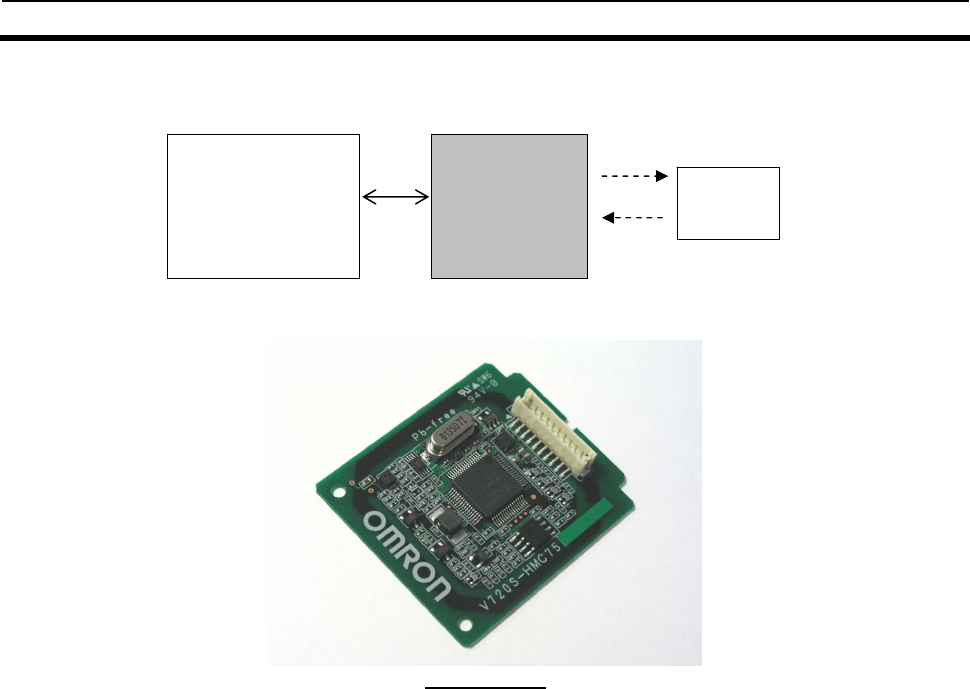
1-1 Features
Section 1-1
1-2
1-1 Features
V720S-HMC75
Compact, Low Power Consumption
• 40 x 47 x t6mm
• Operating: 5V 40mA (when the tag is contact with the antenna)
User-friendly Command Structure
• Easy-to-understand command structure
• Built-in repetitive data write command (enabled when writing identical
data to tag memory areas)
• Specify data code (hexadecimal or ASCII) using read/write command
(CR control only)
Many Operating Modes
• Supports two operating modes -- single access mode and FIFO access
mode -- according to the status of the tags within the communications
range.
• Supports four communications modes depending on the tag
communications method. (Three communications modes when using
single access mode.)
Control
Unit
(Host control unit)
Reader/Writer
Module
V720S-HMC75
V720 series
Tag
2-1
SECTION 2
Specifications and Performance
2-1 Nomenclature and Descriptions ...........................................................................2-2
2-2 Specifications .........................................................................................................2-3
2-2-1 General Specifications...........................................................................................2-3
2-2-2 Interface Specifications .........................................................................................2-4
2-2-3 Interface Electrical Specifications..........................................................................2-5
2-2-4 Interface Circuit .....................................................................................................2-6
2-3 Dimensions .............................................................................................................2-7
2-4 Antenna Center Position........................................................................................2-8
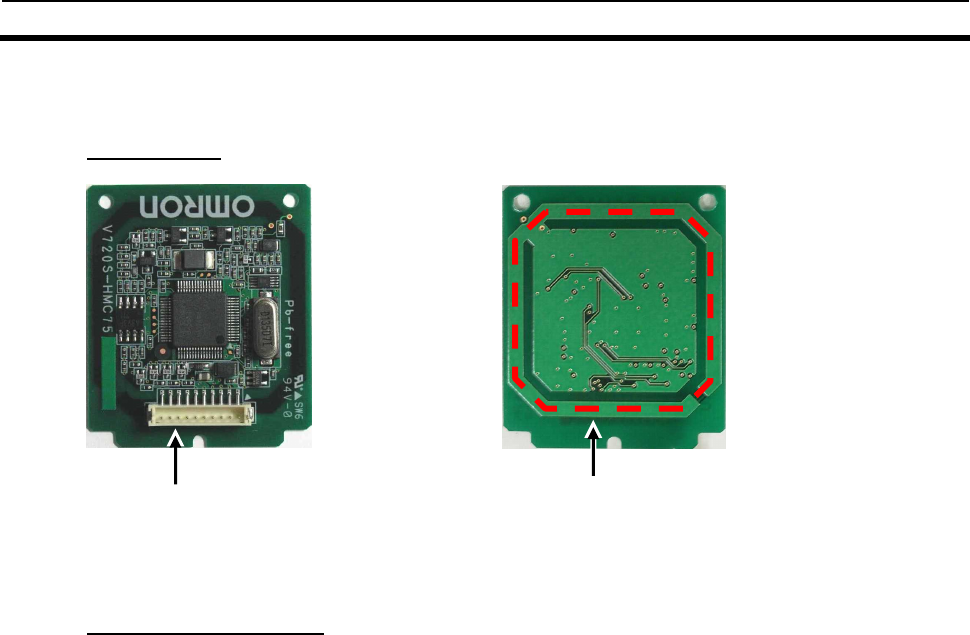
2-1 Nomenclature and Descriptions
Section 2-1
2-2
2-1 Nomenclature and Descriptions
V720S-HMC75
Component Descriptions
• Host Interface Connector
Use this connector to connect to the host control unit.
• Antenna
Move the tags close to the antenna when communicating with the tags.
Host Interface Connector Antenna
(Broken-lined area)
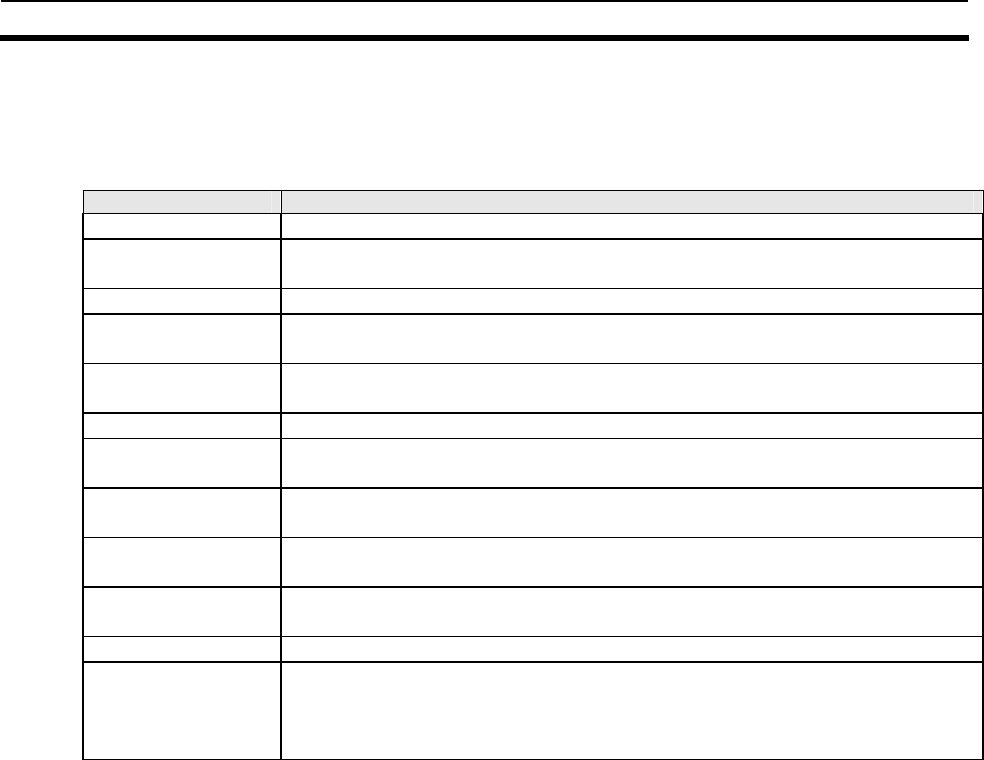
2-2 Specifications
Section 2-2
2-3
2-2 Specifications
2-2-1 General Specifications
Item V720S-HMC75
Dimensions 40 × 47 × 6 mm (thickness)
Mounting method 3 x M2.3 screws (resin screw)
Torque : 0.15N-m or less
Power supply voltage 5 VDC ± 10%
Current consumption Approx. 40 mA max. (oscillating)
Approx. 20 mA max. (not oscillating)
Vibration resistance Destruction: 10 to 150 Hz, 0.1-mm half amplitude at 15 m/s² in X, Y, and Z directions 10
times each for 8 minutes
Shock resistance Destruction: 150 m/s² three times each in 6 directions
Ambient operating
temperature -10 to +55℃
Ambient storage
temperature -25 to +65℃
Ambient operating
humidity 25% to 85% max. (with no condensation)
Communications
frequency 13.56 MHz
Weight Approx. 6 g
Radio standards
Extremely low power radio station (Radio Law Article 4 Section 1 “radio stations that
discharge extremely low electric waves and specified by the Ministry of Posts and
Telecommunications”) In accordance with Radio Law enforcement regulation Article
6 Section 1, the field intensity is 500µV/m or less at distance of 3 m (322 MHz or less).
*1
For the information of communications distance and area, refer to the data in 5-1 and 5-2 of section 5.
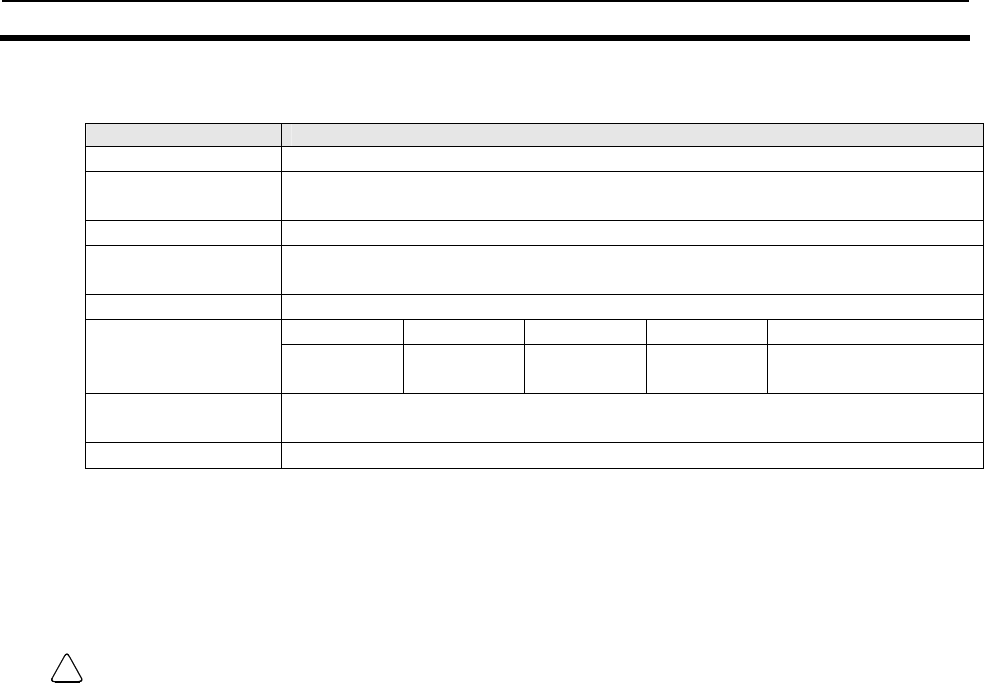
2-2 Specifications
Section 2-2
2-4
2-2-2 Interface Specifications
Item Details
Connectors
*2
S10B-ZR-SM4A-TF (JST Manufacturing Co., Ltd.)
Communications
method 2-wire half duplex serial (CMOS level)
Synchronous method Asynchronous mode or start-stop synchronous mode
Communications
control method
*3
Number-of-characters control
Baud rate
*3
9,600 bps
Character format Start bits Data bits Parity Stop bits Total bits
(Number-of-character
s control) 1 8 None 1 10
Error detection
method BCC (number-of-characters control)
Bit send order Least significant bit (LSB) first
*2 To connect the R/W Module, perform wiring using the following housing and contacts.
• Housing: ZHR-10 (JST Manufacturing Co., Ltd.)
• Contacts: SZH-002T-P0.5 (JST Manufacturing Co., Ltd.), applicable wire sizes: AWG28 to
AWG26
SZH-003T-P0.5 (JST Manufacturing Co., Ltd.), applicable wire sizes: AWG32 to AWG28
Caution Use as short a connecting cable as possible (300 mm max.) to reduce noise.
!
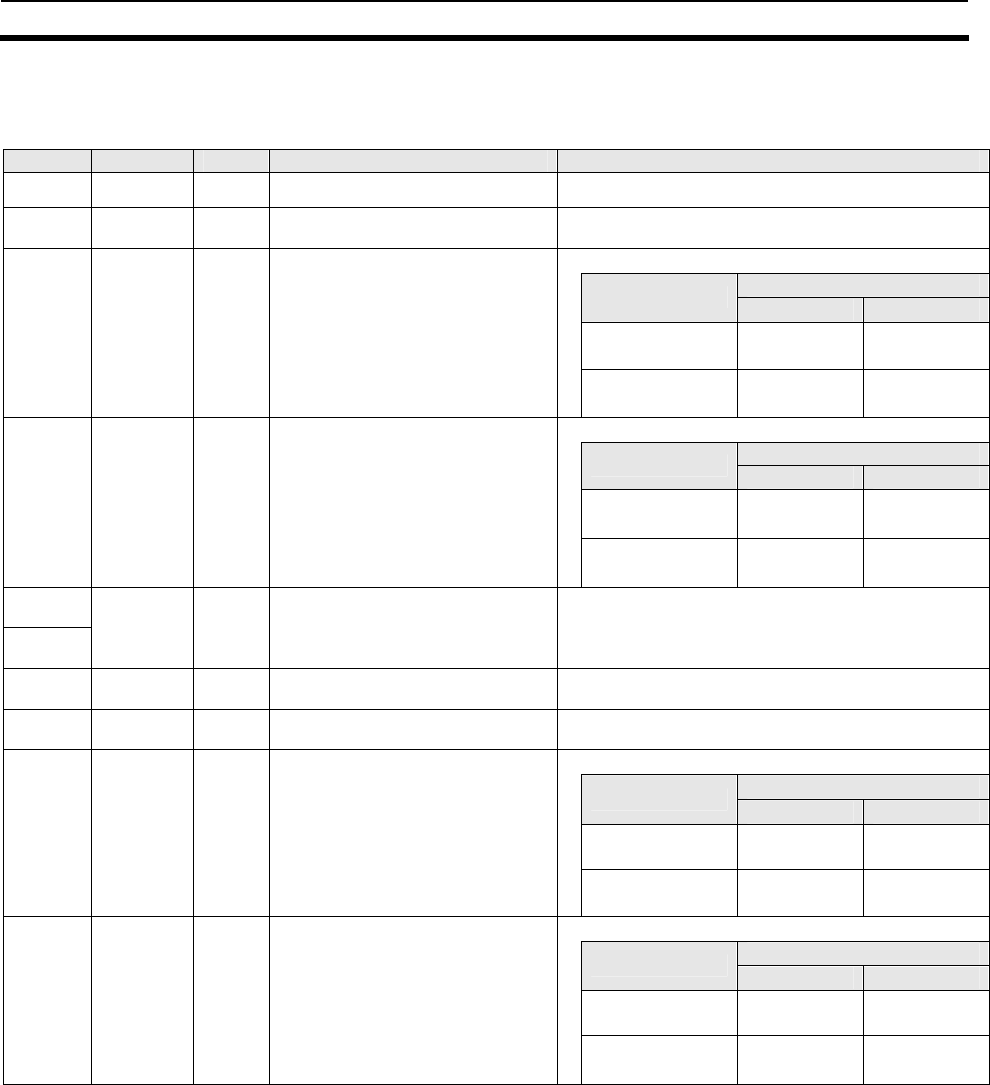
2-2 Specifications
Section 2-2
2-5
2-2-3 Interface Electrical Specifications
Pin No. Symbol I/O Function Electrical characteristics
1 Vcc - 5 V power supply 5 V ± 10%
2 GND - Ground -
CMOS input with 47 kΩ pull-up, positive logic
Specified value
Item Min. Max.
High level input
voltage Vcc x 0.7 Vcc + 0.3 V
3 RxD Input Serial input
Low level input
voltage -0.3 V Vcc x 0.3
CMOS output, positive logic
Specified value
Item Min. Max.
High level output
voltage
Vcc - 1.0 V
(I
OH
= -200 µA) -----
4 TxD Output Serial output
Low level output
voltage ----- 0.6 V
(I
OL
= 1.6 mA)
5
6
GND -
Ground -
7 Reserved -
- -
8 Reserved -
- -
CMOS output, positive logic
Specified value
Item Min. Max.
High level output
voltage
Vcc - 1.0 V
(I
OH
= 1.5 mA) -----
9 RUN Output Output when Module is operating
normally.
Low level output
voltage ----- 0.6 V
(I
OL
= 1.6 mA)
CMOS output, positive logic
Specified value
Item Min. Max.
High level output
voltage
Vcc - 1.0 V
(I
OH
= -200 µA) -----
10 OSC Output Output during antenna oscillation.
Low level output
voltage ----- 0.6 V
(I
OL
= 1.6 mA)
Note Do not connect unused signals.
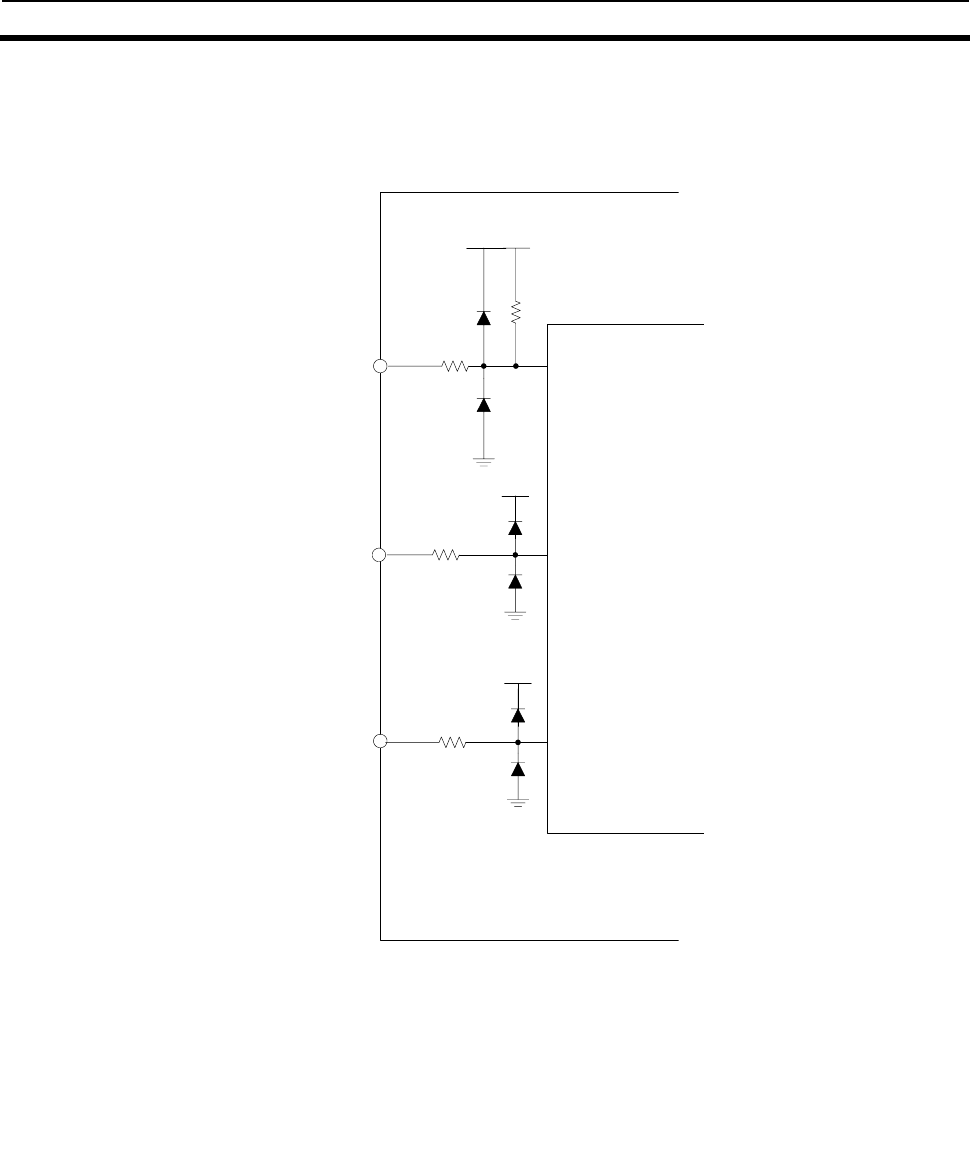
2-2 Specifications
Section 2-2
2-6
2-2-4 Interface Circuit
Vcc
100 ohm
5V
RUN pin No.9,
OSC pin No.10
TxD pin No.4
100 ohm
RxD pim No.3
100 ohm
47k ohm
Vcc
RF Module side
Vcc
CPU
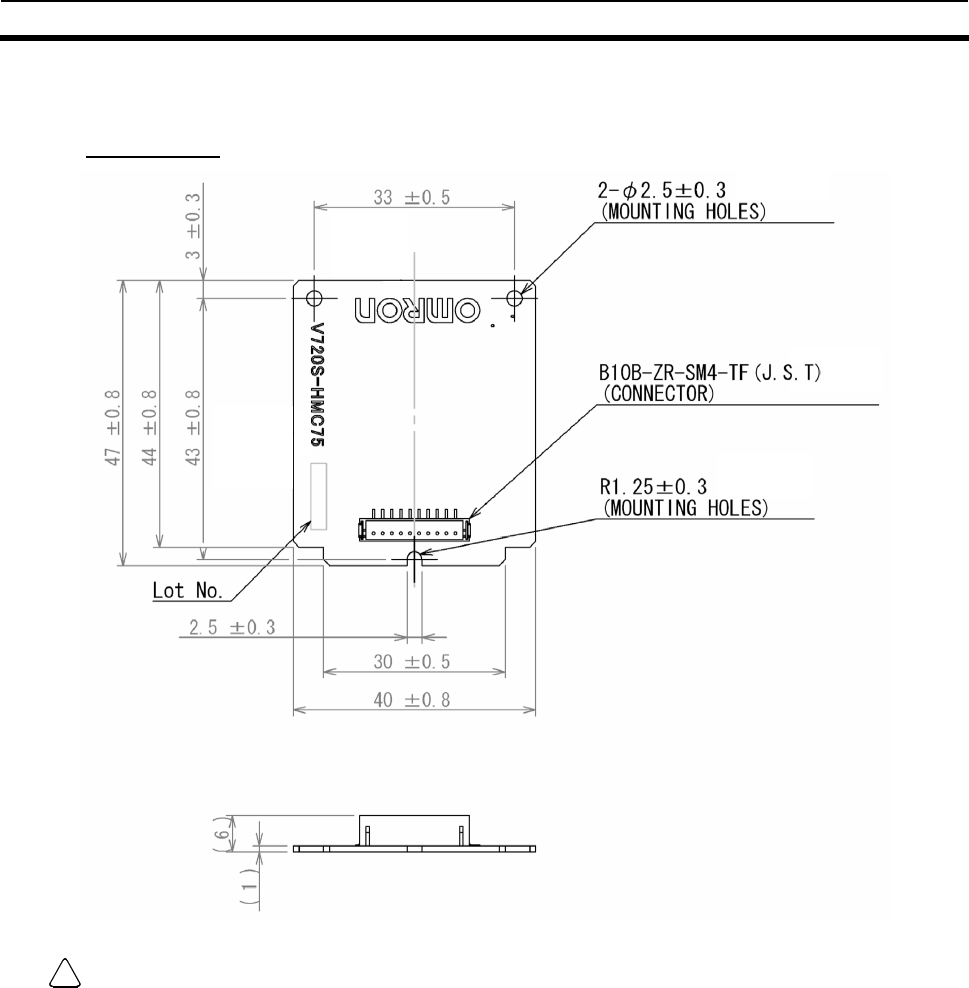
2-3 Dimensions
Section 2-3
2-7
2-3 Dimensions
V720S-HMC75
Caution Use non-metal screws for attachment.
Fasten the screw at specified torque (0.15N-m or less).
!
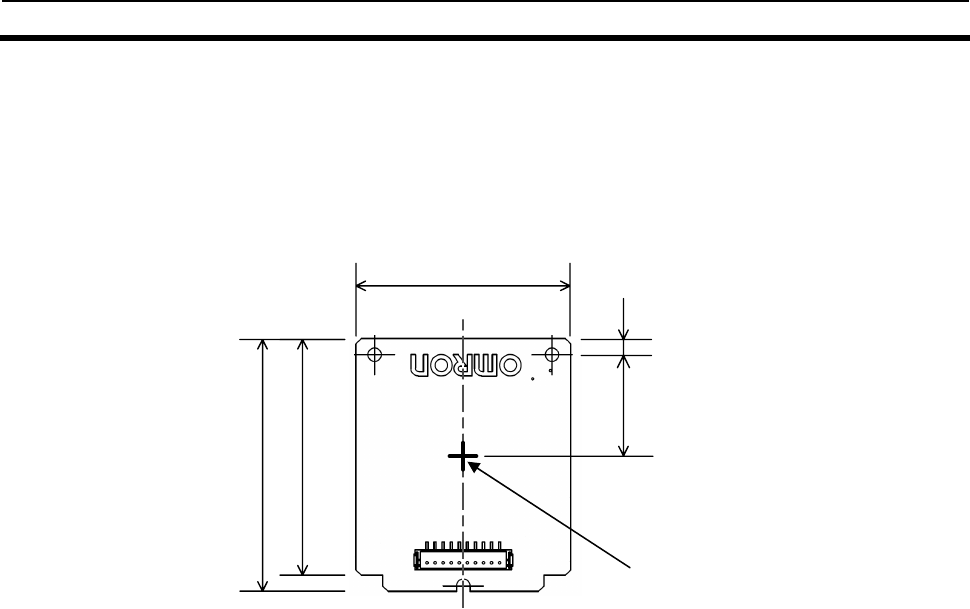
2-4 Antenna Center Position
Section 2-4
2-8
2-4 Antenna Center Position
The center position of the antenna is + marked point shown by the following figure, which can be
measured from the mounting holes.
(There is no actual mark for this center position on the R/W module.)
47
44
3
18.8
40
The center position
3-1
SECTION 3
R/W Module Operations
3-1 Outline of Operations.............................................................................................3-2
3-2 Tag Access Functions............................................................................................3-3
3-2-1 Tag Memory Map...................................................................................................3-3
3-2-2 Single Access and FIFO Access Functions...........................................................3-8
3-2-3 Lock Function ........................................................................................................3-9
3-2-4 Tag Identification Access Function ........................................................................3-10
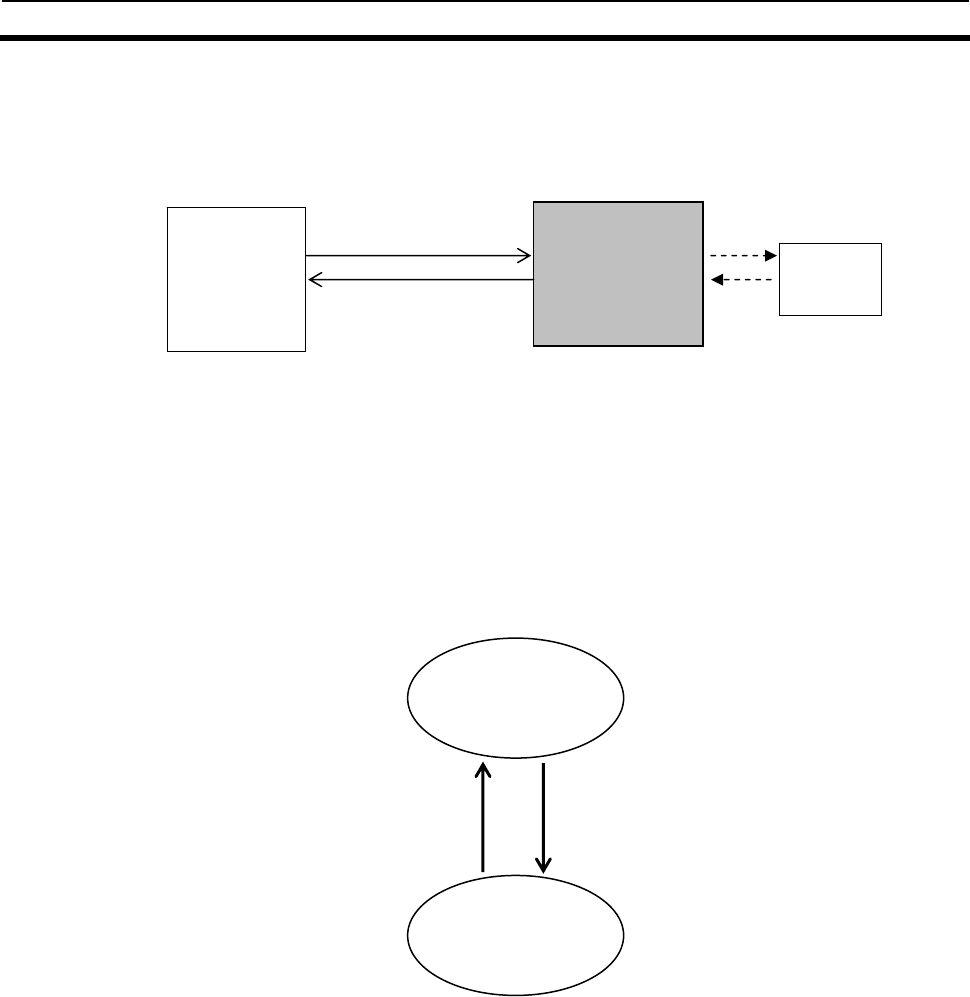
3-1 Outline of Operations
Section 3-1
3-2
3-1 Outline of Operations
The R/W Module reads or writes to the tags using commands sent from the
host control unit, and returns the processing responses to the host control unit.
The R/W Module has three operating modes. The conditions for changing the
mode are shown in the following diagram.
(1) Oscillation mode
This mode performs communications with the tags.
In FIFO access mode, oscillation mode continues until it receives STOP
command.
(2) Sleep Mode (Non-oscillation Mode)
This mode waits for commands from the host control unit.
Control
Unit
Reader/Writer
Module
V720S-HMC75
V720 series
Tag
Command
Response
Sleep Mode
(non-oscillation
mode)
Oscillation mode
Responses to
host completed
Commands from
host completed
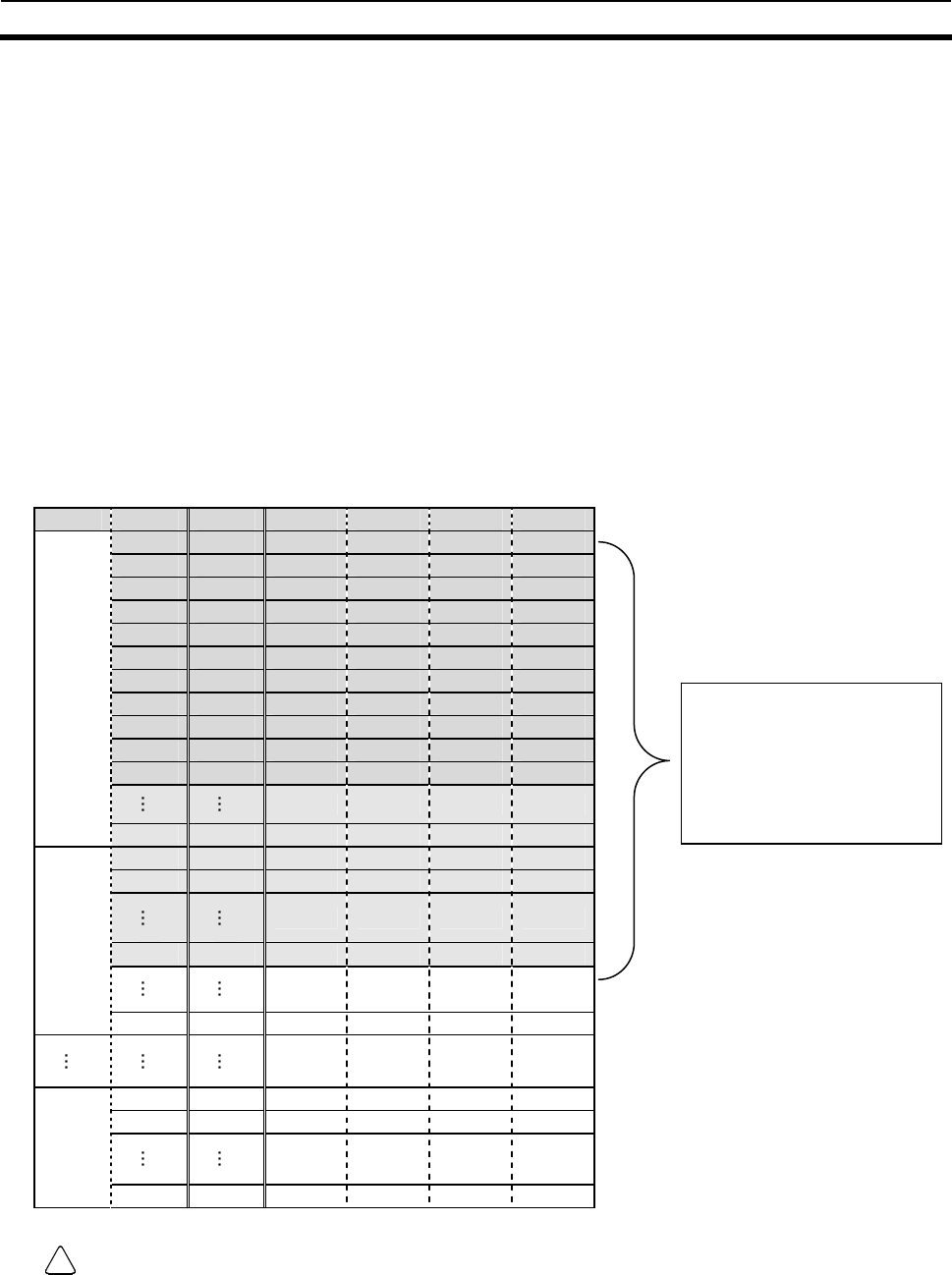
3-2 Tag Access Functions
Section 3-2
3-3
3-2 Tag Access Functions
3-2-1 Memory Map of Tag
3-2-1-1 I-CODE SLI Chip (Philips IC product name : SL2 ICS20)
In this module, processing is performed with the minimum access unit of one
page (4 bytes), the maximum number of pages that can be processed
simultaneously being one bank (16 pages), and up to a total of 16 banks (266
pages) being accessible.
The I-CODE SLI user memory area spans 112 bytes, or 28 pages, from page
00 Hex to page 1B Hex.
1) Max. address space of ISO/IEC15693 chip with a 4 Bytes/page organization
Bank Page Block Byte 0 Byte 1 Byte 2 Byte 3
0 Hex 0
1 Hex 1
2 Hex 2
3 Hex
4 Hex
5 Hex
6 Hex
7 Hex
8 Hex
9 Hex
A Hex
00 Hex
F Hex 15
0 Hex 16
1 Hex 17
B Hex 27
01 Hex
F 31
0 Hex 240
1 Hex 241
0F Hex
F Hex 255
Caution The memory map above shows a memory area covered by the product. It complies with the
ISO/IEC15693 standard.
Proper operation is ensured for our Tag, which incorporates Philips' IC product SL2ICS20
(known as "I-CODE SLI"), although this product incorporates a firmware allowing to access
chips with a four bytes/page organization and fully compliant to ISO/IEC15693. Perform
check test adequately when using other company’s tag or tags that incorporate other
ISO/IEC15693 chips.
I-CODE SLI
user memory area
Page 00 Hex to 1B Hex
(28 pages =112 bytes)
!
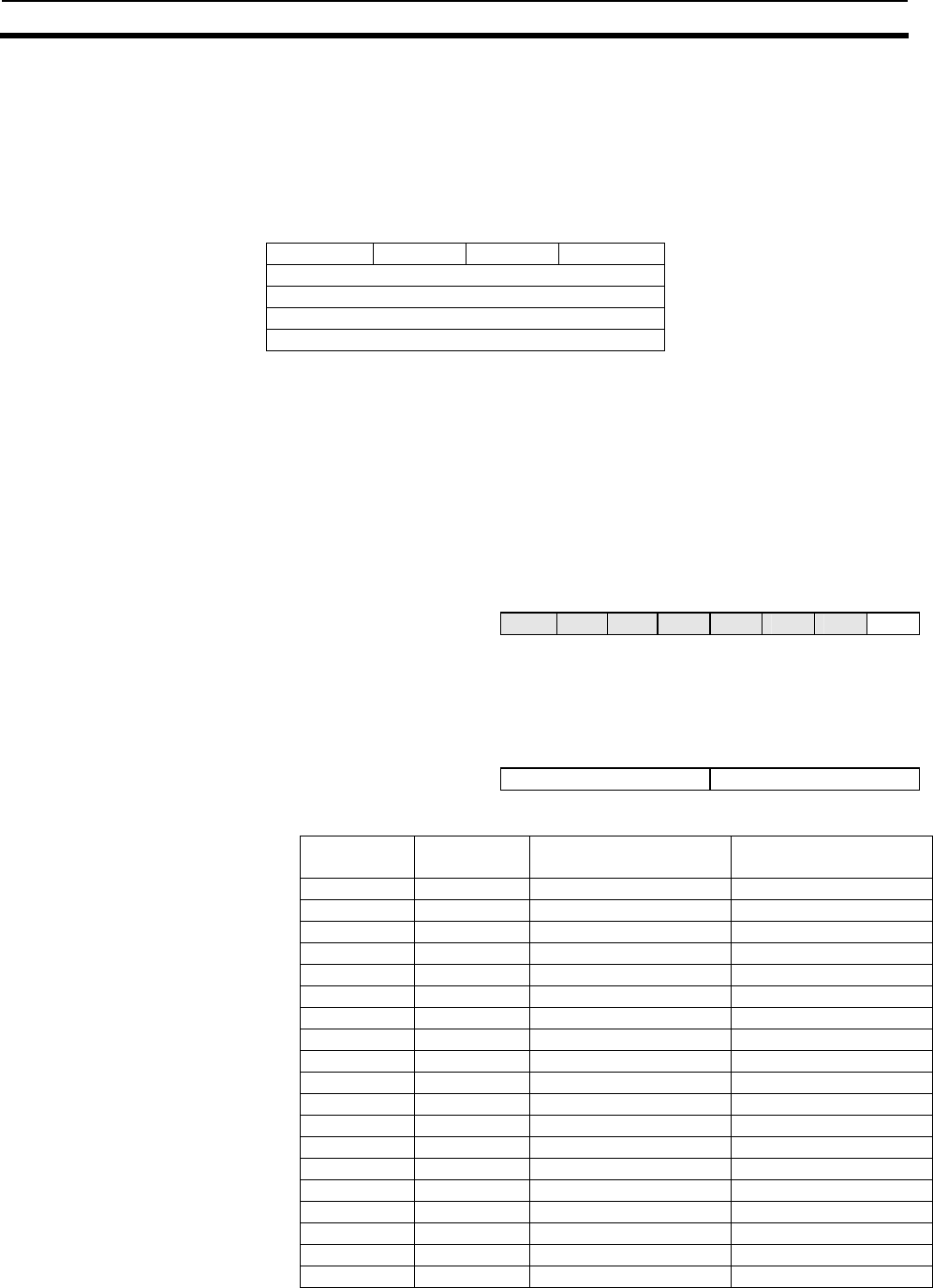
3-2 Tag Access Functions
Section 3-2
3-4
2) System Area of I-CODE SLI
The I-CODE SLI system area of is reserved in an area different from the user
memory.
Special commands are used for accessing the system area.
Byte 0 Byte 1 Byte 2 Byte 3
UID
UID
EAS/AFI/DSFID
Write-protect
(1)
UID
UID is a tag-specific code and has been written into the memory during the
chip production process.
The R/W Module is shipped with this page write-access inhibited; there is no
way of making this page rewritable by the user.
(2)
EAS/AFI/DSFID
EAS mode: Inhibition/permission of EAS function
(e=0: EAS mode disabled; e=1: EAS mode enabled)
MSB LSB
Byte 1 × × × × × × × e
The pages marked with "×" in the table above are reserved for future use.
(3)
AFI
AFI is a special area for enabling the user to identify a tag that is suitable to a
specific user application.
MSB LSB
Byte 2 AFI upper 4 bits AFI lower 4 bits
AFI upper
4 bits
AFI lower
4 bits Application area Example/reference
0 0 All areas Area not identified
X 0 X area Selected extensively
X Y Y category of X area
0 Y Limited to Y category
1 0,Y Transportation
Mass-transit, bus, air plane
2 0,Y Finance Bank
3 0,Y Recognition Access control
4 0,Y Telecommunication Public telephone, CSM
5 0,Y Medical care
6 0,Y Multimedia Internet
7 0,Y Game
8 0,Y Data storage Portable file
9 0,Y Logistics
A 0,Y Home delivery services
B 0,Y Mail
C 0,Y Airplane luggage
D 0,Y Reservation
E 0,Y Reservation
F 0,Y Reservation
*Remarks: X=1 to F Y=1 to F
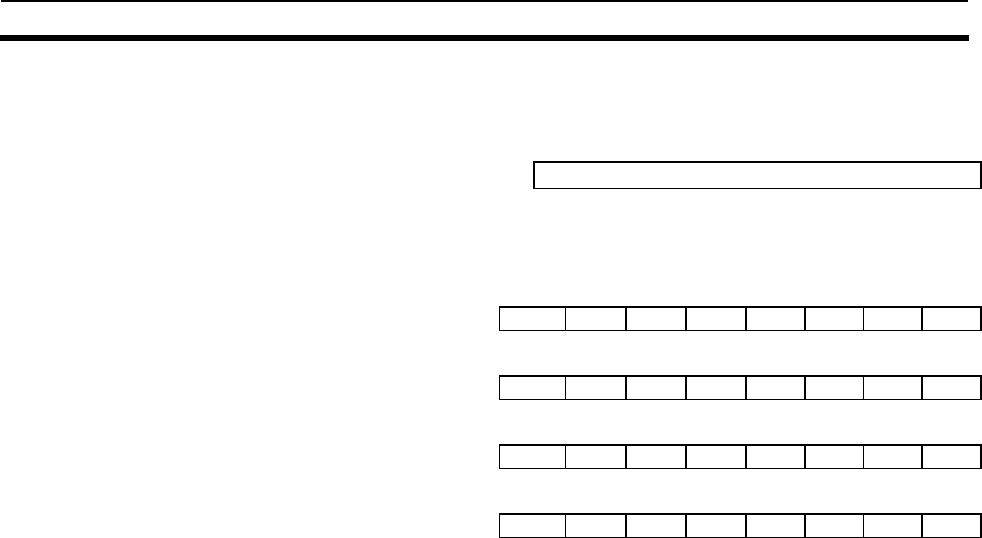
3-2 Tag Access Functions
Section 3-2
3-5
(4)
DSFID
DSFID indicates how the data is configured in the memory.
MSB LSB
Byte 3 DSFID
(5)
Write-access conditions
The pages are write-inhibited permanently if they are so indicated in the
memory map. The factory settings are as follow. If the bit of a particular page is
1, that page is write-protected.
MSB LSB
Byte 0 0 0 0 0 0 0 0 0
Page
03
Page
02
Page
01
Page
00
Byte 1 0 0 0 0 0 0 0 0
Page
0B
Page
0A
Page
09
Page
08
Page
07
Page
06
Page
05
Page
04
Byte 2 0 0 0 0 0 0 0 0
Page
13
Page
12
Page
11
Page
10
Page
0F
Page
0E
Page
0D
Page
0C
Byte 3 0 0 0 0 0 0 0 0
Page
1B
Page
1A
Page
19
Page
18
Page
17
Page
16
Page
15
Page
14
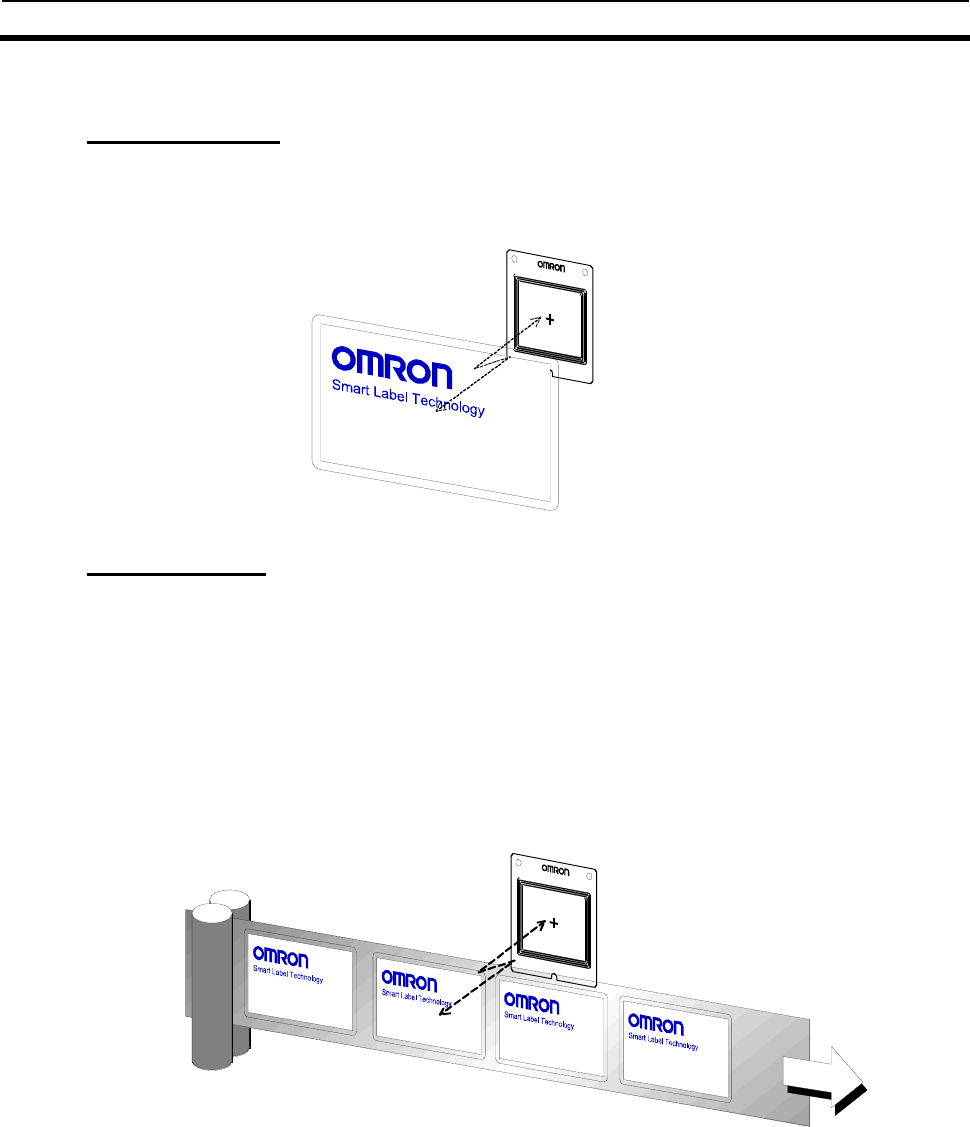
3-2 Tag Access Functions
Section 3-2
3-6
3-2-2 Single Access and FIFO Access Functions
Single Access Mode
Use this mode to communicate with only one tag within the R/W Module
communications area.
The time required for communications with the tag is shorter compared with
FIFO access mode.
FIFO Access Mode
FIFO (First In First Out) access mode enables reading tags in order as they
enter the antenna communications range. Tags with which communications
have been completed are prohibited from being accessed again, so even if
tags with which communications have been completed are still within range of
the antenna, communications will be possible with new tags as they enter the
communications range. When two or more tags enter the antenna
communications range at the same time, a communications error will occur.
When a tag to which access has been prohibited moves out of the
communications area, communications with it will be possible again if it
reenters the antenna communications range.
The above diagram shows an example of a tag inspection line.
When the distance between tags is small, two tags may enter the R/W Module
communications range at the same time. If this happens when in Single
Access Mode, a communications error will occur, or even if read/write appears
to have been performed, there is no way to know which of the two tags was
read. In FIFO Access Mode, tags entering communications range can be read
or written to in order, so this mode is suited to applications such as a tag
inspection line, in which the order of access is important.

3-2 Tag Access Functions
Section 3-2
3-7
3-2-3 Lock Function
The lock function is a protection function provided to prevent the loss of data
by unintentionally overwriting fixed data stored on the tags. This function can
be set using the lock command. This function can be set using the lock
command.
There is a lock setting area in the tag system area, enabling user-defined
areas to be write-protected one page at a time. If the write command is
executed for a page that has been write-protected, a write processing error will
occur.
Note The lock function used with the V720 Series cannot be canceled. Pages that have been
write-protected cannot be written to again, so be careful when using this function.
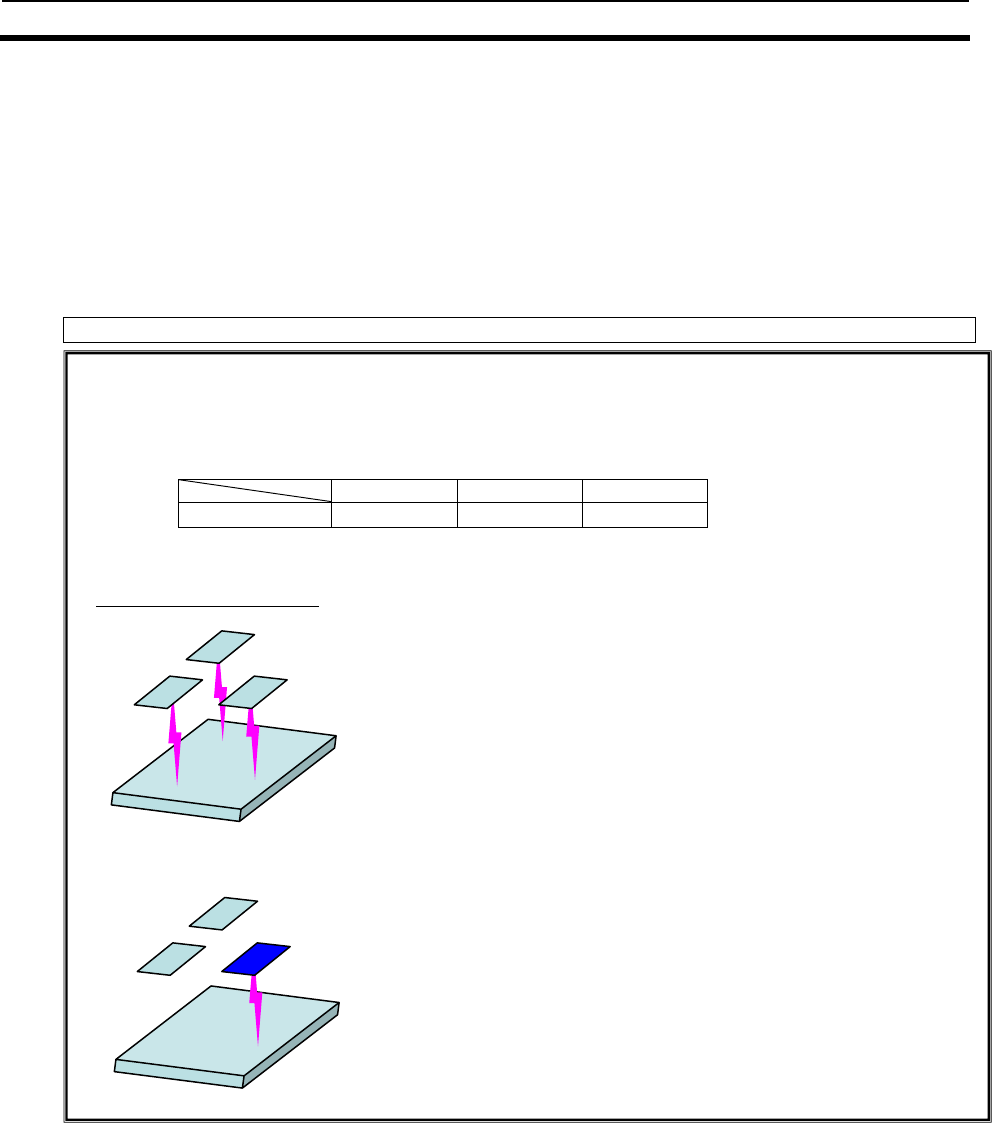
3-3 Tag Access Functions
Section 3-2
3-8
3-2-4 Tag Identification Access Function
Only when the ID code stored on the tag and the ID code included in the
command sent from the antenna match will the tag respond. This is called the
tag identification access function.
Commands sent from the R/W Module respond without depending upon the ID
code stored in the tags.
Reference Information for I-CODE SLI
Followings are examples of tag identification access function using OMRON’s antenna and reader
such as V720-H04 and V720S-BC5D4A.
(1) The set values of the tag ID codes are given in the following table. These settings can be made by
using the R/W Module or the reader.
Tag No.1 Tag No.2 Tag No.3
AFI 11 Hex 22 Hex 33 Hex
(2) Tag ID Access Operation
•Not Using Tag ID Access
(1) The reader’s AFI set value is taken to be 00 Hex. (Set at
the factory.)
(2) Multiple tag access commands are executed.
(3) All tags within communications range respond.
(The tag family codes and application IDs are not
required.)
•Using Tag ID Access
(1) The set value of the reader’s AFI is 22 Hex.
(2) Multiple tag access commands are executed.
(3) Only tags with the same ID code set in (1) and which are
within communications range respond. In this example,
only tag No. 2 responds.
3
2
1
3
2
1

4-1
SECTION 4
Controlling the R/W Module
4-1 Communications Frames ..............................................4-2
4-1-1 Number-of-characters Control ........................................ 4-2
4-2 Data Formats .........................................................4-3
4-2-1 Command Code List................................................. 4-3
4-2-2 Communications Options ............................................ 4-3
4-2-3 End Code List ...................................................... 4-7
4-3 Commands and Responses during......................................4-8
4-3-1 General Commands (Commands sent to the RF Module) ................. 4-8
4-3-2 Commands Specific to the I-CODE SLI Chip ............................ 4-9
Caution:
There are two methods to control an R/W module from the host control unit; the CR control and
number-of-characters control.
OMRON’s existing product (V720S-HMC73/HMC73T) allows user to use either methods but this
product (V720S-HMC75) introduces only the number-of-characters control method.
CR control
Data in the communications frame is handled as ASCII characters in
2-digit hexadecimal code (ASCII code). CR control simplifies operations
with the host.
Number-of-characters
Control
Data in the communications frame is handled as hexadecimal code,
thus minimizing communications time with the host.
In this manual, the codes are displayed as follows:
ASCII characters: ’ ×× ‘
Control code using ASCII characters: ‘<Control code>‘
Displayed as hexadecimal code: ×× Hex
!
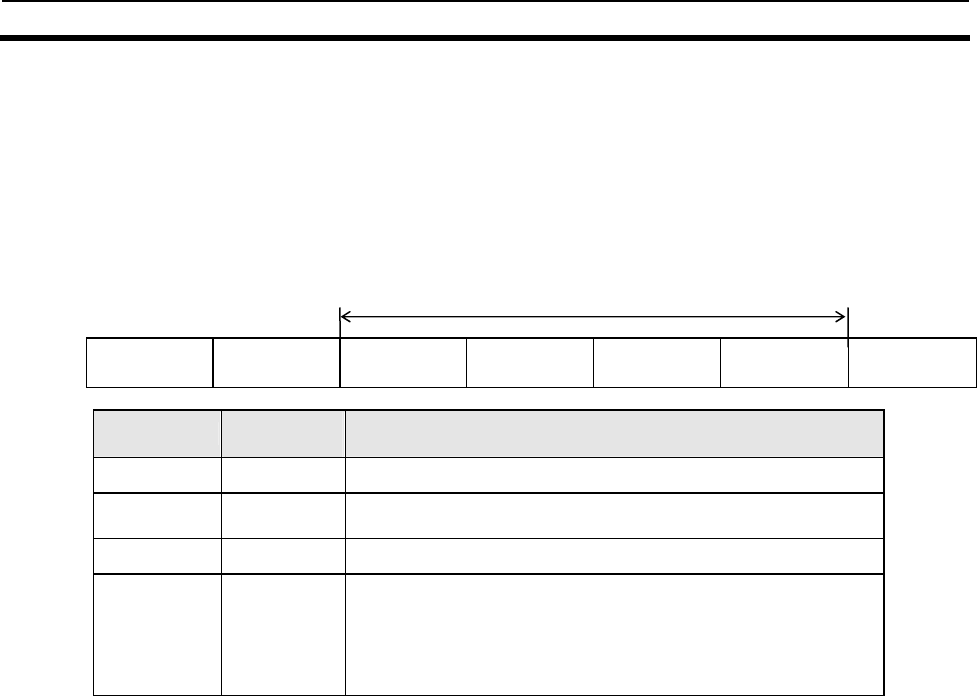
4-1 Communications Frames
Section 4-1
4-2
4-1 Communications Frames
4-1-1 Number-of-characters Control
The frame format is given below, with ‘<STX>‘ (ASCII code: 02 Hex) as the beginning of the frame.
The number-of-characters control method is useful when the R/W Module is directly connected to a
microcomputer board, allowing communications time with the host device to be reduced.
STX No. of
characters Data 1 Data 2 ⋅⋅⋅⋅⋅⋅ Data n BCC
Data No. of
characters Details
STX 1 Code indicating start of communications frame (02 Hex).
No. of
characters 1 Total number of data and BCC characters in hexadecimal.
Data 1~69 Command parameters (hexadecimal)
BCC 1
8-bit data taking the exclusive logical sum (ExOR) of the number of
characters and the data characters
(excluding STX).
Example: Using STX 03 10 00 BCC
BCC = (03 Hex) ExOR (10 Hex) ExOR (00 Hex) = 13 Hex
(Communications Control Procedure)
When character data has been received for the number of characters given at the beginning of the
frame, the frame is assumed to have ended. If the interval between data is greater than 2 sec,
processing of the reception is interrupted, and the sleep mode is engaged. If reception is stopped,
responses are not returned from the R/W Module to the host.
Data: 69 characters max
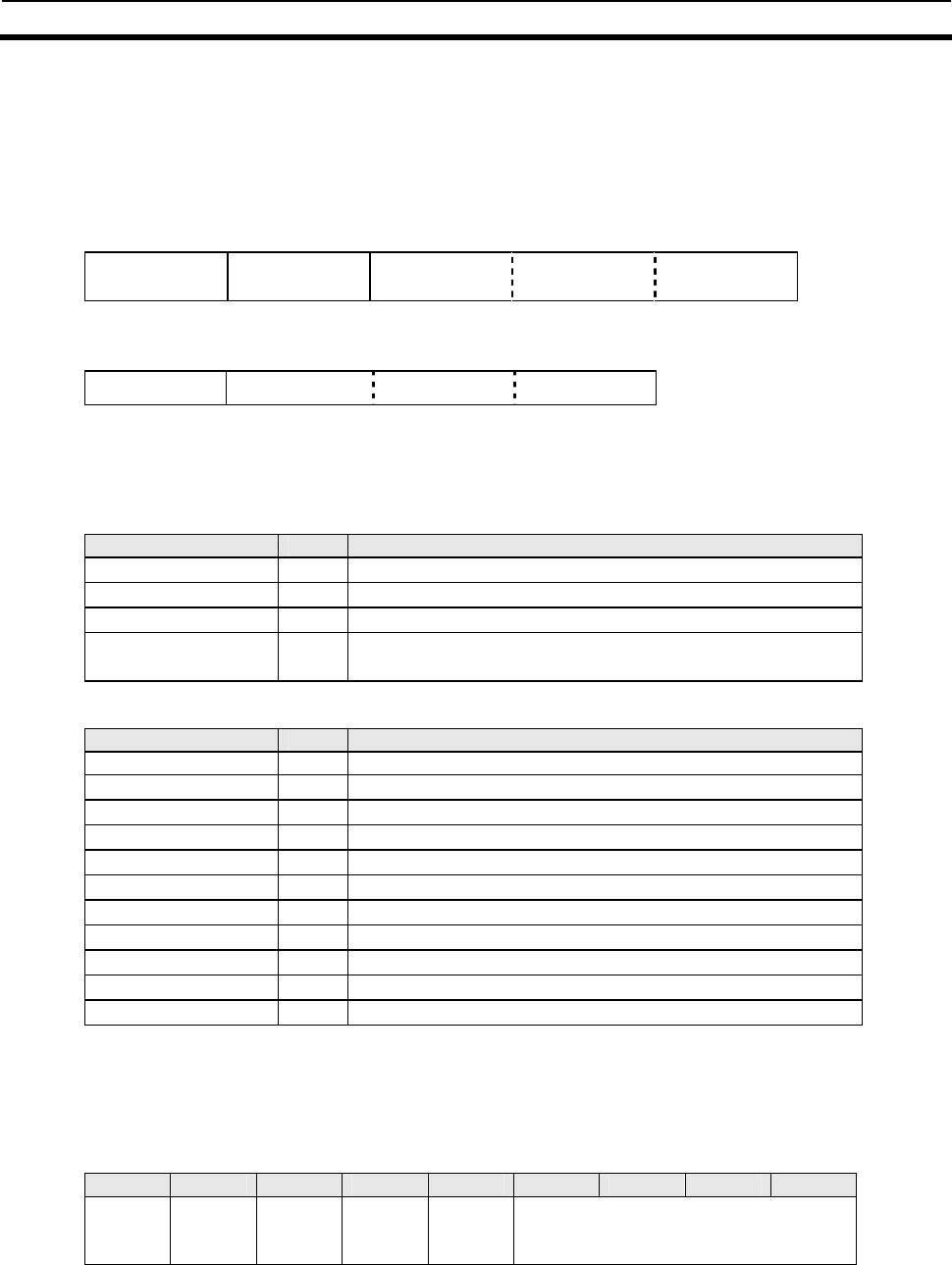
4-2 Data Formats
Section 4-2
4-3
4-2 Data Formats
The data in the communications frames used for commands and responses use the following formats.
Command
The command data consists of the command, communications options, and parameters. The com-
munications options are added only to commands 01 to 03.
Command Communications
option Parameter 1 ⋅⋅⋅⋅⋅⋅ Parameter n
Response
The response data consists of an end code and parameters.
End code Parameter 1 ⋅⋅⋅⋅⋅⋅ Parameter n
4-2-1 Command Code List
Commands specify R/W Module processing. The commands are given in the following table.
1) General Commands (Commands sent to the RF Module)
Command name No. Details
Test 10 Sends the received data to the host device.
ACK 11 The host device received the data properly.
NACK 12 The host device did not receive the data properly.
STOP 13 Ends the command currently being executed.
Stops antenna oscillation.
2) Commands Specific to the I-CODE SLI Chip
Command name No. Details
Read 31 Reads tag memory data on a page basis.
Write 32 Writes data to tag memory on a page basis.
Write identical data 33 Writes identical data to tag memory on a page basis.
Read UID (SNR) 35 Reads tag serial numbers.
Set AFI 36 Overwrites and locks tag AFI.
Set DSFID 37 Overwrites and locks tag DSFID.
Set write-protection 39 Sets write-protection on a page basis
Read Tag info 3A Reads tag system information.
Read UID & data 41 Reads tag UID and memory data simultaneously.
EAS Alarm 42 Sends EAS Alarm to the tag.
Set EAS 43 Enables/disables and locks EAS.
4-2-2 Communications Options
The data code and communications mode can be specified as communications options. Data code
specification is possible only when using CR control.
Bit 7 6 5 4 3 2 1 0
Setting
details 0 0 1 0 Communications mode
*Bits 4, 6 and 7 must be 0.
*Bit 5 must be 1.
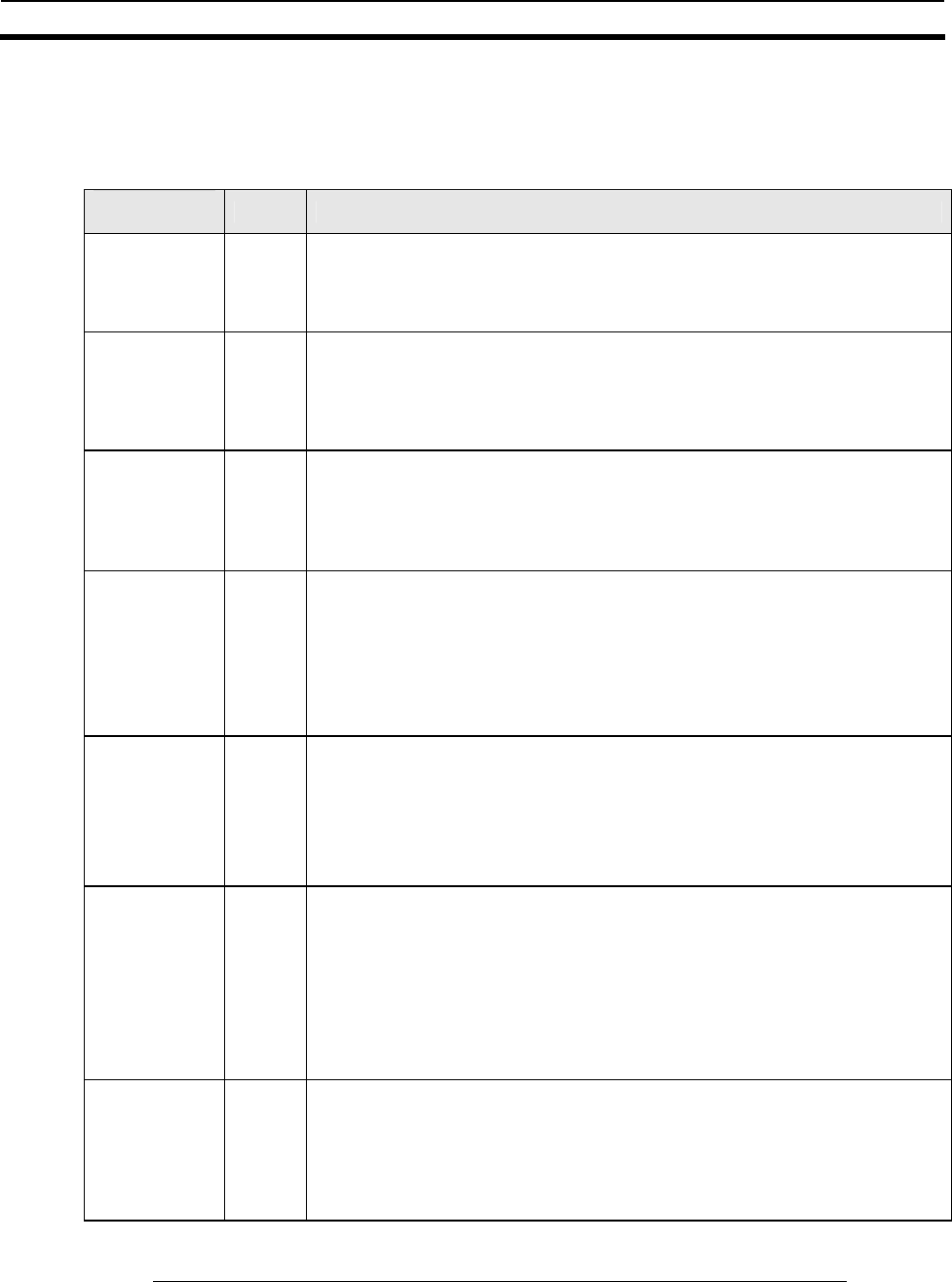
4-2 Data Formats
Section 4-2
4-4
1) Specifying the Communications Mode
The following seven communications modes are supported for different processing procedures and
execution timing.
Communica-
tions mode No. Details
Single Trigger 0 Hex
After a command is received, communications with the tag is performed immediately
and a response is sent. If there is no tag in communications range, a No Tag error is
sent. After the response has been sent, the mode changes to sleep mode.
Only one tag is permitted in communications range.
Single Auto 1 Hex
After a command is received, this mode waits for a tag to enter communications
range, and then performs communications with the tag. After the response has
been sent, the mode changes to sleep mode. If a STOP command is received
while waiting for a tag, the command is ended.
Only one tag is permitted in communications range.
Single Repeat 2 Hex
After a command is received, this mode waits for a tag to enter communications
range, and then performs communications with the tag. If this mode has been
specified, the command is repeated sequentially until a STOP command is re-
ceived. This mode is enabled only for read commands.
Only one tag is permitted in communications range.
FIFO Trigger 8 Hex
After a command is received, communications with the tag is performed imme-
diately and a response is sent. If there is no tag in communications range, a No
Tag error is sent. Access is prohibited to tags with which communications have
been completed, and the R/W Module continues unmodulated oscillation. Tags
with which communications have been completed do not respond to the next
command. After the response has been sent, the mode changes to sleep mode. If
a STOP command is received, oscillation stops.
FIFO Auto 9 Hex
After a command is received, this mode waits for a tag to enter communications range,
and then performs communications with the tag. Access is prohibited to tags with which
communications have been completed, and the R/W Module continues unmodulated
oscillation. Tags with which communications have been completed do not respond to
the next command. After the response has been sent, the mode changes to sleep
mode. If a STOP command is received while waiting for a tag, the command is ended.
FIFO Continu-
ous A Hex
After a command is received, this mode waits for a tag to enter communications range,
and then performs communications with the tag. Access is prohibited to tags with which
communications have been completed, and the R/W Module continues unmodulated
oscillation. Tags with which communications have been completed do not respond to
the next command. After the response has been sent, when ACK is received, this mode
again waits for a tag to enter communications range, and then performs communica-
tions with the tag. If a STOP command is received while waiting for a tag, the command
is ended.
FIFO Repeat B Hex
After a command is received, this mode waits for a tag to enter communications range,
and then performs communications with the tag. Access is prohibited to tags with which
communications have been completed. Tags with which communications have been
completed do not respond to the next command. If this mode has been specified, the
command is repeated sequentially until a STOP command is received.
Note Single repeat mode can only be specified for commands 31, 35, 3A, 41, and 42.
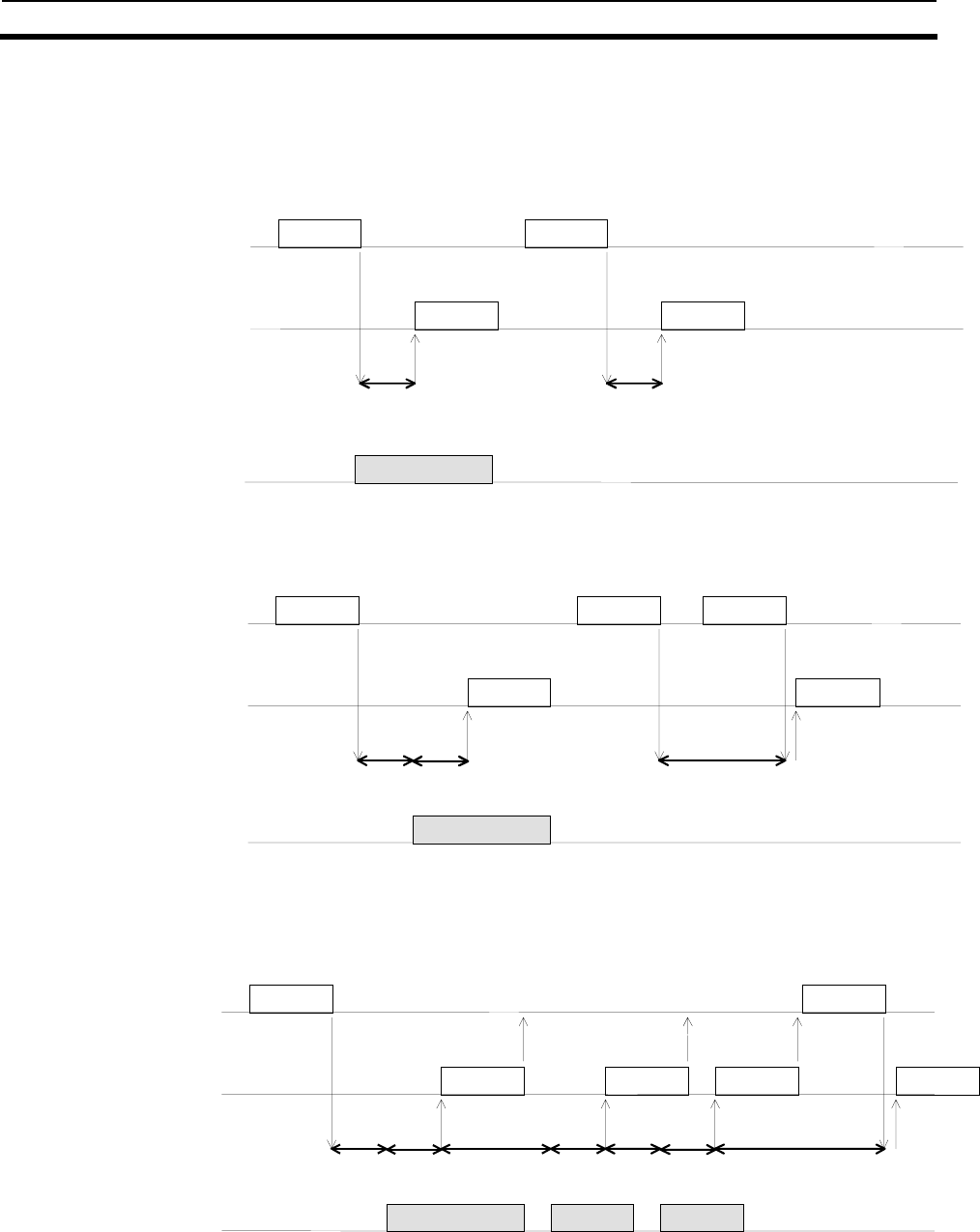
4-2 Data Formats
Section 4-2
4-5
2) Communications Modes Diagrams
1) Single Trigger
Operation Sequence
2) Single Auto
Operation Sequence
3) Single Repeat
Operation Sequence
Host control unit to
R/W Module
R/W Module to hos
t
control unit
Communications with tag
Tag operation
command
command
response1 response2
tag 1
Command processing
No Tag Error
Command processing
command
command
response1 response
tag 1
Tag detection End processing
stop
Host control unit to
R/W Module
R/W Module to hos
t
control unit
Communications with tag
Tag operation
Command
p
rocessin
g
Tag detection
command
response1 response3
tag 1
stop
tag 2
response2
tag 3
response
Host control unit to
R/W Module
R/W Module to hos
t
control unit
Communications with tag
T
ag operation
Tag detection Tag detection
Tag
detection
Tag detection
Command
p
rocessin
g
Command
p
rocessin
g
Command
p
rocessin
g
End processing
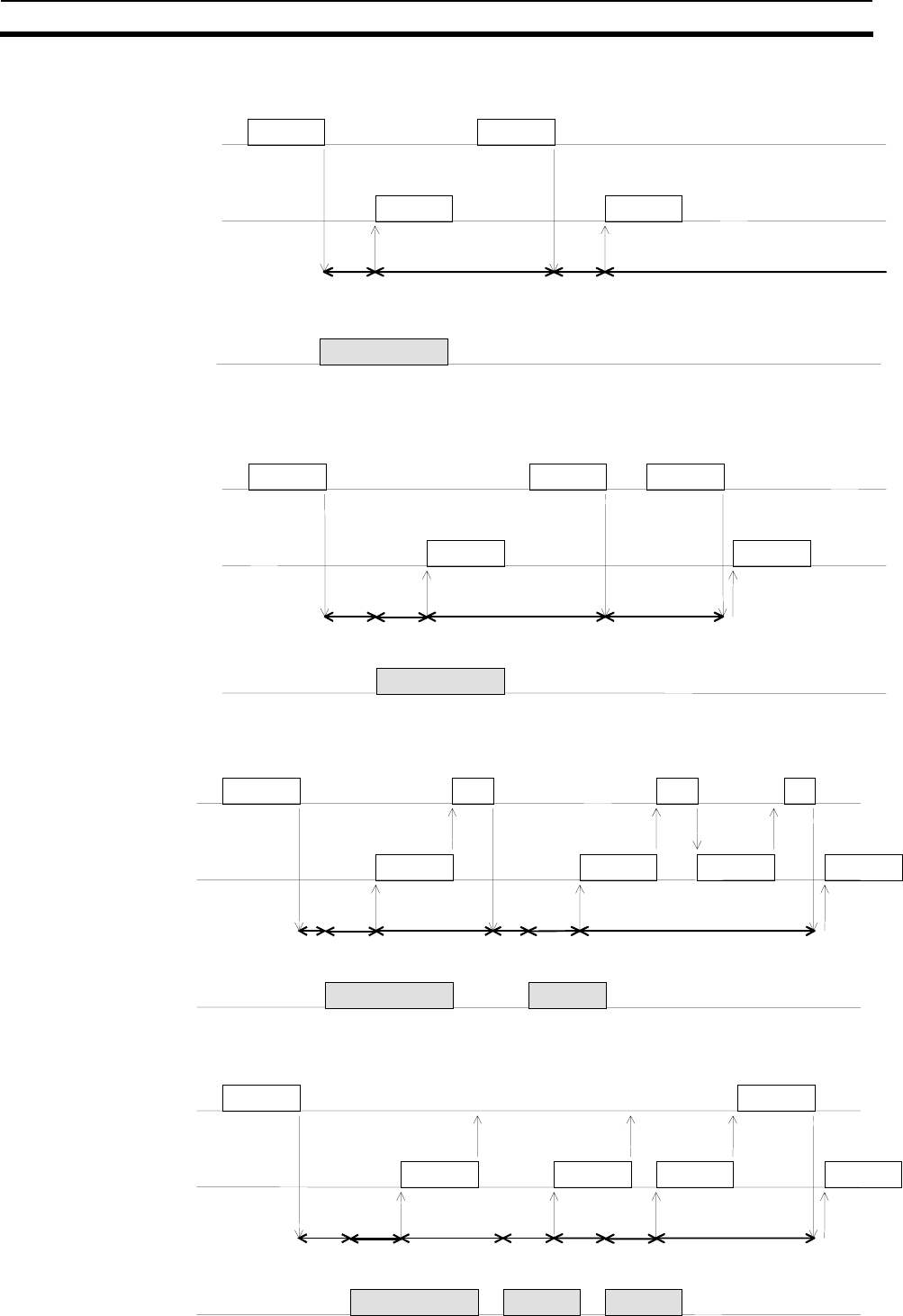
4-2 Data Formats
Section 4-2
4-6
4) FIFO Trigger
Operation Sequence
5) FIFO Auto
Operation Sequence
6) FIFO Continuous
Operation Sequence
7) FIFO Repeat
Operation Sequence
command command
response1 response2
tag 1
No Tag Error
Unmodulated
oscillation
Host control unit to
R/W Module
R/W Module to hos
t
control unit
Communications with tag
Tag operation
Command
p
rocessin
g
Command
p
rocessin
g
Unmodulated
oscillation
command
command
response1 response
tag 1
Tag
detection
End processing
stop
Host control unit to
R/W Module
R/W Module to hos
t
c
ontrol unit
Communications with tag
T
ag operation
Command
p
rocessin
g
Unmodulated
oscillation
Tag
detection
command
response1
tag 1
End processing
stop
tag 2
response2 response
A
CK
response2
NACK
Host control unit to
R/W Module
R/W Module to hos
t
c
ontrol unit
Communications with tag
T
ag operation
Tag
detection
Command
p
rocessin
g
Tag
detection
Command
p
rocessin
g
Unmodulated
oscillation
Unmodulated
oscillation
command
response1 response3
tag 1
stop
tag 2
response2
tag 3
response
Host control unit to
R/W Module
R/W Module to hos
t
c
ontrol unit
Communications with tag
T
ag operation
Tag
detection
Tag
detection
Tag
detection
Command
p
rocessin
g
Command
p
rocessin
g
Command
p
rocessin
g
Tag
detection
End processing
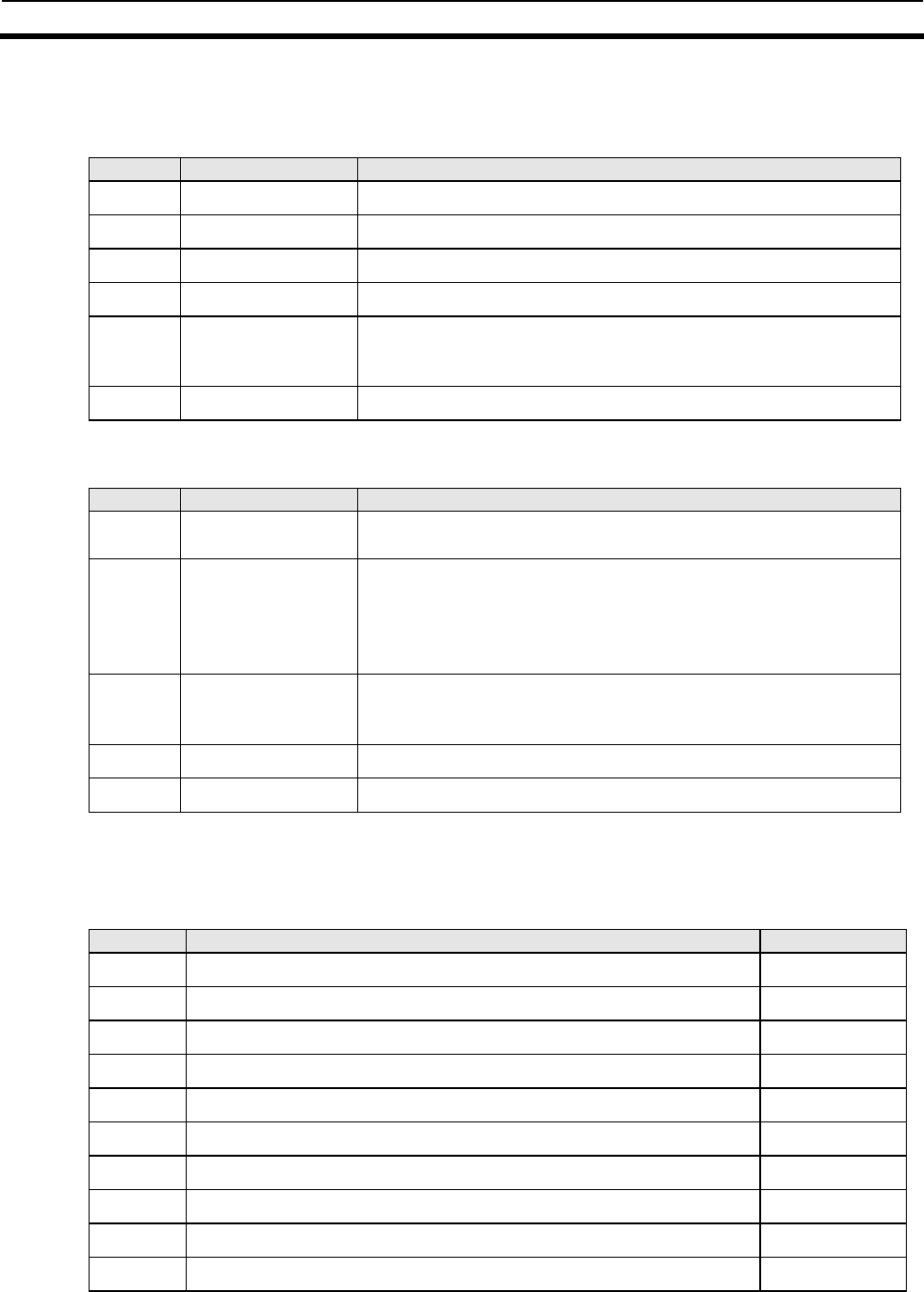
4-2 Data Formats
Section 4-2
4-7
4-2-3 End Code List
Communications between Host Device and R/W Module
End code Name Details
10 Parity Error • There is a character with a parity error in the command received.
11 Framing Error • There is a character with a framing error in the command received.
12 Overrun Error • There is a character with an overrun error in the command received.
13 BCC Error • The BCC for the frame received is invalid.
14 Format Error
• Command format does not match specifications.
Examples: Command is not defined, page/address specifications are
invalid, etc.
18 Frame Error • Frame received exceeds 73 bytes.
Communications between R/W Module and Tags
End code Name Details
70 Communications Error
• Interference, such as noise, has occurred during communications with
the tags, preventing normal completion.
71 Write Error
• Write command has been specified to a page that has been
write-prohibited.
• There is a tag area to which reading is possible, but writing is not possible.
• Correct data cannot be written because the tag has exceeded its
usable write life.
72 No Tag Error
• There was no tag in the communications area when the command
was executed.
• The specified pages do not exist.
79 Command Error • (see Comparison with ISO Error Code)
7A Address Error • The specified pages do not exist.
Comparison with ISO Error Code
When an ISO tag responds by returning an error, the module responds with the end code shown in
the following table.
ISO code Details Module end code
01 Command not in use. Cannot recognize request command code. 79
02 Unrecognized command. Example: format error 79
03 Any unused command. 79
0F Unknown or unused error code. 79
10 Specified block cannot be used (not present). 7A
11 Specified block cannot be re-locked because it has been already locked. 00
12 The contents of the specified block cannot be changed because it is locked. 71
13 Writing to the specified block did not end normally. 71
14 Locking of the specified block did not end normally. 71
Others RFU 79
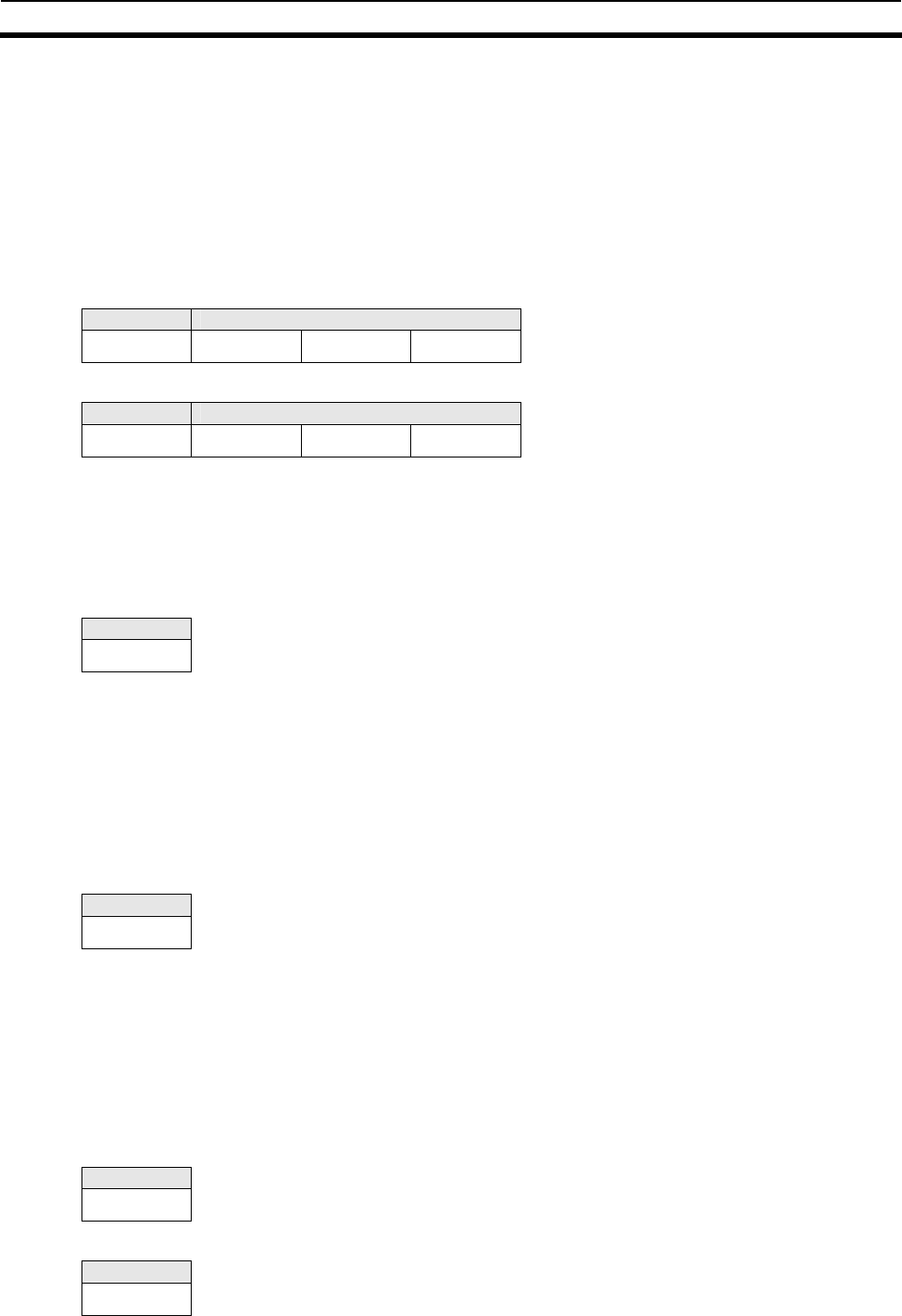
4-3 Commands and Responses
Section 4-3
4-8
4-3 Commands and Responses
4-3-1 General Commands (Commands sent to the RF Module)
1) Test
This command tests communications with the host. When this command is received, the R/W Module
sends the same data to the host.
Command
Command Test data
10 Hex Data 1 ⋅⋅⋅⋅⋅⋅ Data n
Response
End code Test data
00 Hex Data 1 ⋅⋅⋅⋅⋅⋅ Data n
The test data returned is the same as the command data.
2) ACK
Use this command when the communications mode is FIFO Continuous Mode.
ACK is sent after the response has been received, and the next read operation is permitted.
Command
Command
11 Hex
Response
There is no response to ACK.
3) NACK
If the host control unit does not receive a response normally, NACK is sent as a request to resend the
response.
When the R/W Module receives the NACK command, it resends the immediately preceding response.
Command
Command
12 Hex
Response
The immediately preceding response data is resent.
4) STOP
Use this command to stop the R/W Module processing. When this command is received, the R/W
Module stops processing the current command and enters sleep mode. If the antenna is oscillating,
the oscillation also stops.
Command
Command
13 Hex
Response
End code
00 Hex
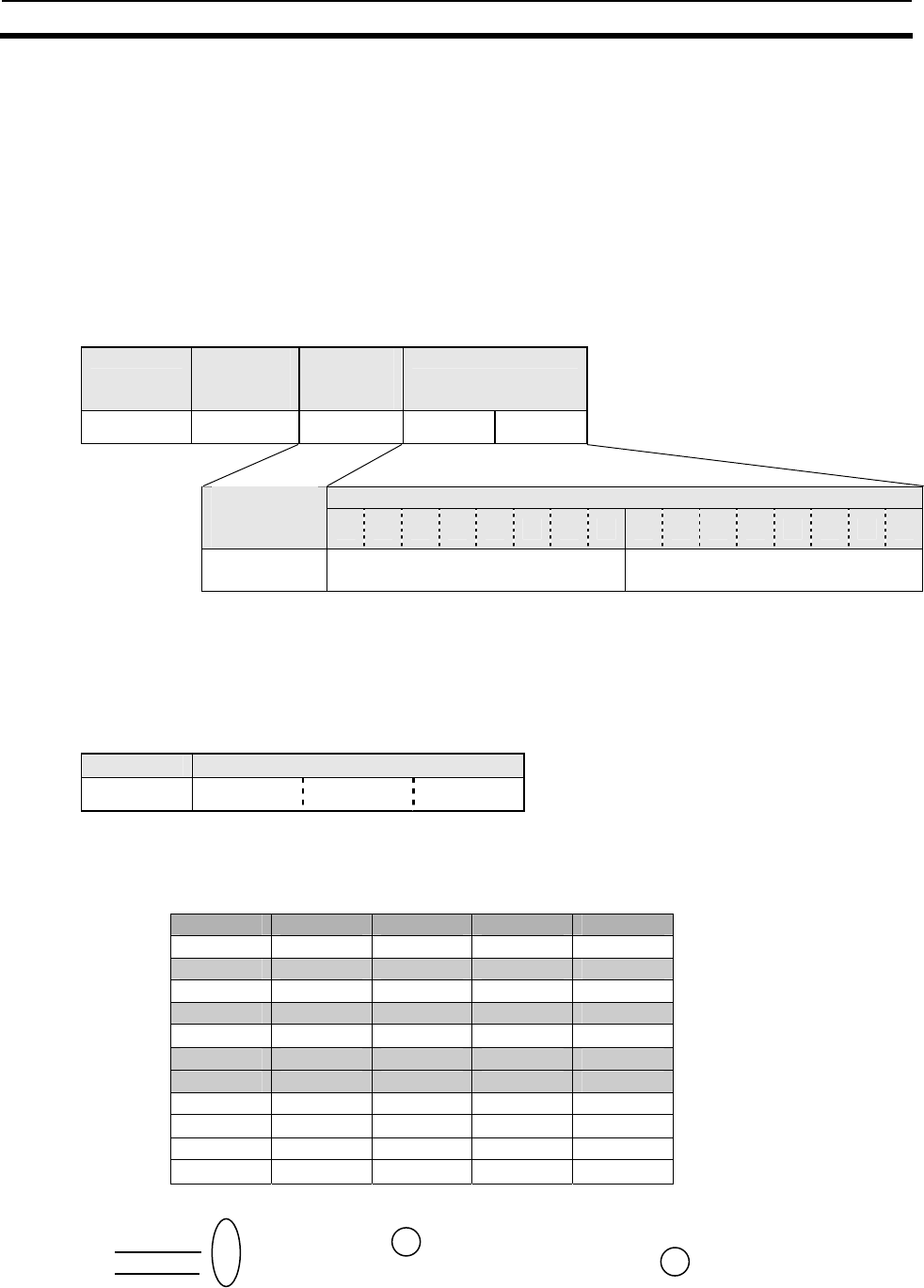
4-3 Commands and Responses
Section 4-3
4-9
4-3-2 Commands Specific to the I-CODE SLI Chips
1) Read
Use this command to read data from the tags. Data can be read from a user-specified page.
Command
This command sends the pages to be read as command parameters. The page specification is as
follows: The bits that correspond to the pages to be read are set to 1, and all other bits are set to 0.
This binary number is converted to hexadecimal and sent with the command. The pages are specified
by the user.
Command
Communi-
cations
option
Bank
specifica-
tion
Page specification
31 Hex
Page specification (settable value)
Bank
specification
(Settable value) F E D C B A 9 8 7 6 5 4 3 210
00 Hex to FF
Hex 00 Hex to FF Hex 00 Hex to FF Hex
Response
The response returns the data read and the end code (normal end: ‘00’).The read data is returned
sequentially in ascending order of the pages specified. If an error occurs, an error code is returned. In
the case of a Tag equipped with I-CODE1, the read data is returned in the order:
B⇒C⇒D⇒E⇒F⇒0⇒1⇒···⇒A.
End code Read data
*1
00 Hex Data 1 ・・・ Data n
*1 Number of data n = Number of specified pages x 8
<Command Example>
The following table gives the tag user memory details for the following example of commands and
responses.
Page Byte 0 Byte 1 Byte 2 Byte 3
0 30 Hex 31 Hex 32 Hex 33 Hex
1 34 Hex 35 Hex 36 Hex 37 Hex
2 38 Hex 39 Hex 30 Hex 30 Hex
3 40 Hex 41 Hex 42 Hex 43 Hex
4 44 Hex 45 Hex 46 Hex 47 Hex
5 48 Hex 49 Hex 4A Hex 4B Hex
6 4C Hex 4D Hex 4E Hex 4F Hex
7 50 Hex 51 Hex 52 Hex 53 Hex
8 54 Hex 55 Hex 56 Hex 57 Hex
9 58 Hex 59 Hex 5A Hex 61 Hex
10 62 Hex 63 Hex 64 Hex 65 Hex
Reading the following four pages: 1, 3, 5, and 6, using Single Trigger Mode is as follows:
BCC
Command 02 05 31 00 00 006A 5D Hex
Response 02 12 00 34353637 40414243 48494A4B 4C4D4E4F 12 Hex
BCC
STX
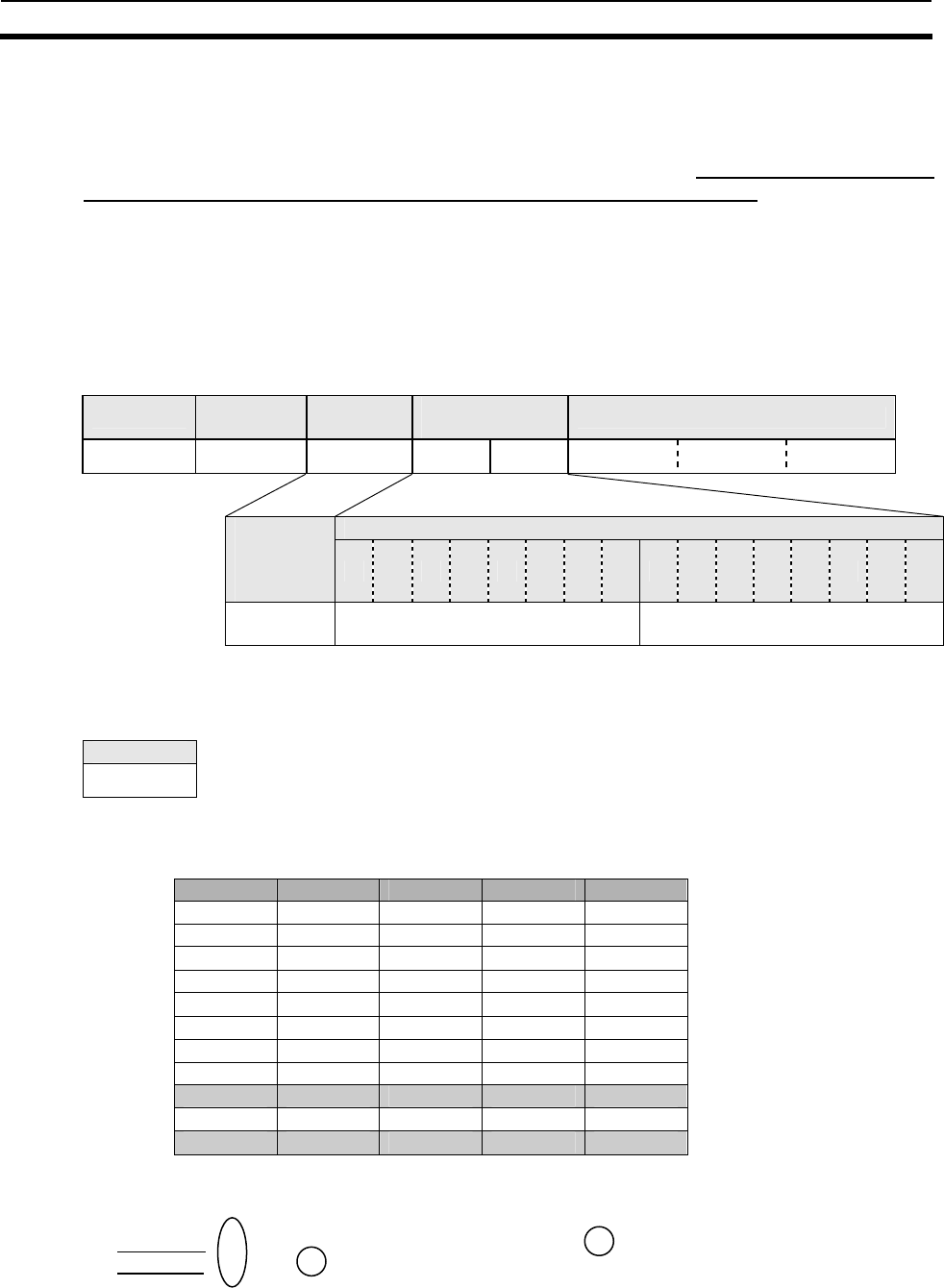
4-3 Commands and Responses
Section 4-3
4-10
2) Write
Use this command to write data to tags on a page basis. Data can be written to user-specified pages
(except B Hex to E Hex for I-CODE1). The maximum number of pages which can be written in one
operation is one bank, and writing to pages across banks is impossible. There is no need to perform
the verify read process, since this command performs it as part of its execution.
Command
This command sends the data to be written as parameters. The page specification is as follows: The
bits that correspond to the pages to be written are set to 1, and all other bits are set to 0. This binary
number is converted to hexadecimal and sent with the command. The write data is specified se-
quentially in ascending order of the pages specified. In the case of a Tag equipped with I-CODE1,
specify the write data in the order: F⇒0⇒1⇒···⇒A.
Command Communica-
tions option
Bank
specification
Page
specification Write data
*1
32 Hex Data 1 … Data n
Page specification (settable value)
Bank speci-
fication
(Settable
value)
F E D C B A 9 8 7 6 5 4 3 2 1 0
00 Hex to
0F Hex 00 Hex to FF Hex 00 Hex to FF Hex
*1 Number of data n = Number of specified pages x 8
Response
The response returns the end code (normal end: ‘00’).
End code
00 Hex
<Command Example>
The following table gives details of tag user memory when executing the following command.
Page Byte 0 Byte 1 Byte 2 Byte 3
0 30 Hex 31 Hex 32 Hex 33 Hex
1 34 Hex 35 Hex 36 Hex 37 Hex
2 38 Hex 39 Hex 30 Hex 30 Hex
3 40 Hex 41 Hex 42 Hex 43 Hex
4 44 Hex 45 Hex 46 Hex 47 Hex
5 48 Hex 49 Hex 4A Hex 4B Hex
6 4C Hex 4D Hex 4E Hex 4F Hex
7 50 Hex 51 Hex 52 Hex 53 Hex
8 52 Hex 46 Hex 49 Hex 44 Hex
9 58 Hex 59 Hex 5A Hex 61 Hex
10 56 Hex 37 Hex 32 Hex 30 Hex
Writing 52464944 Hex to page 8, and 56373230 Hex to page 10 using FIFO repeat mode:
BCC
Command 02 0D 32 00 0B 0500 52464944 56373230 48 Hex
Response 02 02 00 02 Hex
BCC
STX
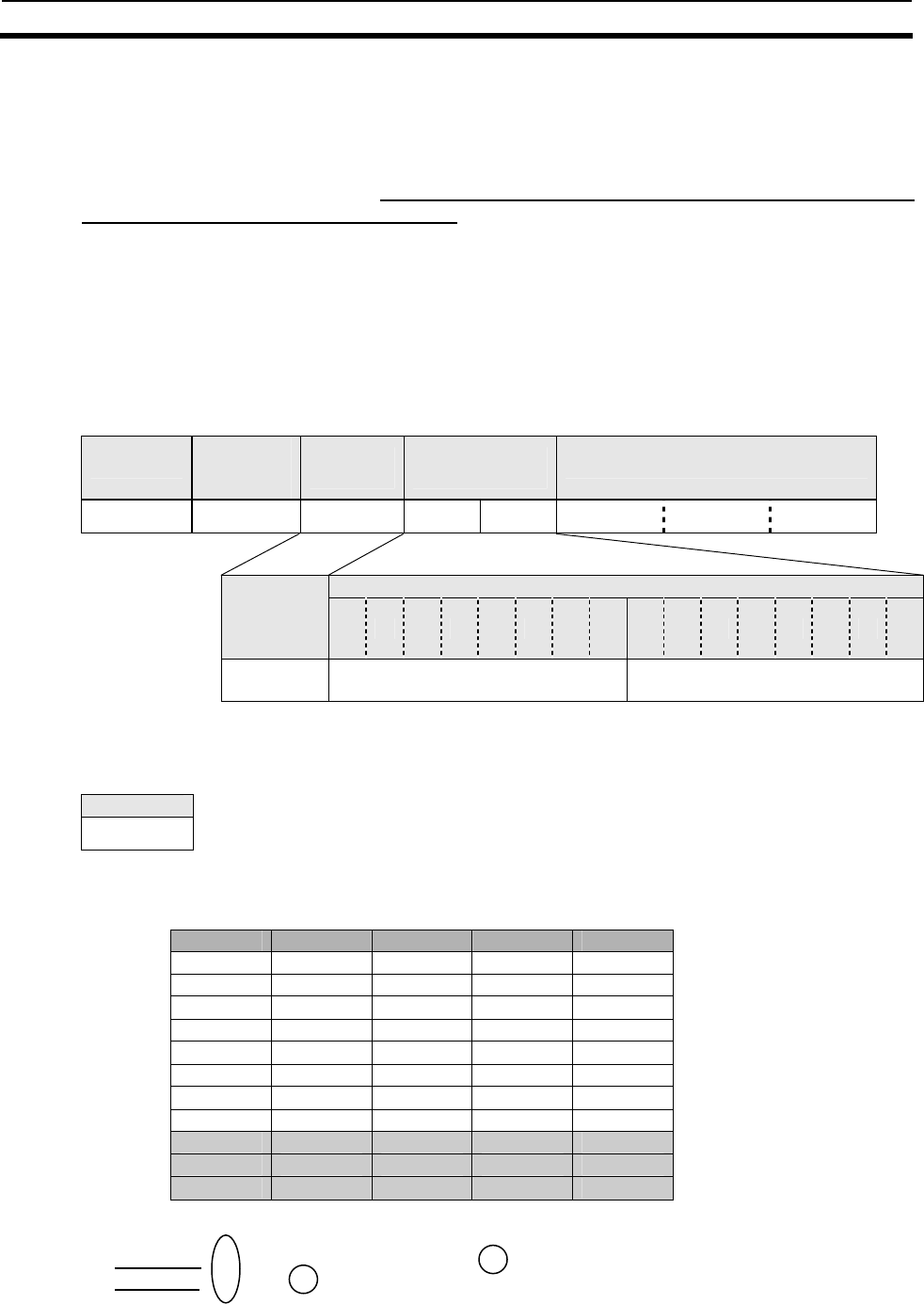
4-3 Commands and Responses
Section 4-3
4-11
3) Write identical data
Use this command to write identical data to tags by the page. Data can be written to user-specified pages.
This command is useful when writing the same data to multiple pages
The maximum number of pages which can be written to in one operation is one bank, and writing to
pages across banks is impossible. There is no need to perform the verify read process, since this
command performs it as part of its execution.
Command
As parameters, the command sends specification of the pages to be written and the data to write to
the specified pages one page at a time. The page specification is as follows: The bits that correspond
to the pages to be written are set to 1, and all other bits are set to 0. This binary number is converted
to hexadecimal and sent with the command. The write data is specified sequentially in ascending
order of the pages specified. In the case of a Tag equipped with I-CODE1, specify the write data in the
order: F⇒0⇒1⇒···⇒A.
Command
Commu-
nications
option
Bank
specification
Page
specification Write data
*1
33 Hex Data 1 … Data n
Page specification (settable value)
Bank
specification
(Settable
value)
F E D C B A 9 8 7 6 5 4 3 2 1 0
00 Hex to
0F Hex 00 Hex to FF Hex 00 Hex to FF Hex
*1 Number of data n = Number of specified pages x 8
Response
The response returns the end code (normal end: ‘00’).
End code
00 Hex
Command Example
The following table gives details of tag user memory when executing the following command.
Page Byte 0 Byte 1 Byte 2 Byte 3
0 30 Hex 31 Hex 32 Hex 33 Hex
1 34 Hex 35 Hex 36 Hex 37 Hex
2 38 Hex 39 Hex 30 Hex 30 Hex
3 40 Hex 41 Hex 42 Hex 43 Hex
4 44 Hex 45 Hex 46 Hex 47 Hex
5 48 Hex 49 Hex 4A Hex 4B Hex
6 4C Hex 4D Hex 4E Hex 4F Hex
7 50 Hex 51 Hex 52 Hex 53 Hex
8 30 Hex 30 Hex 30 Hex 30 Hex
9 30 Hex 30 Hex 30 Hex 30 Hex
10 30 Hex 30 Hex 30 Hex 30 Hex
Writing 30303030 Hex to pages 8, 9, and 10 using FIFO Trigger Mode:
BCC
Command 02 09 33 00 08 0700 30303030 36 Hex
Response 02 02 00 02 Hex
BCC
STX
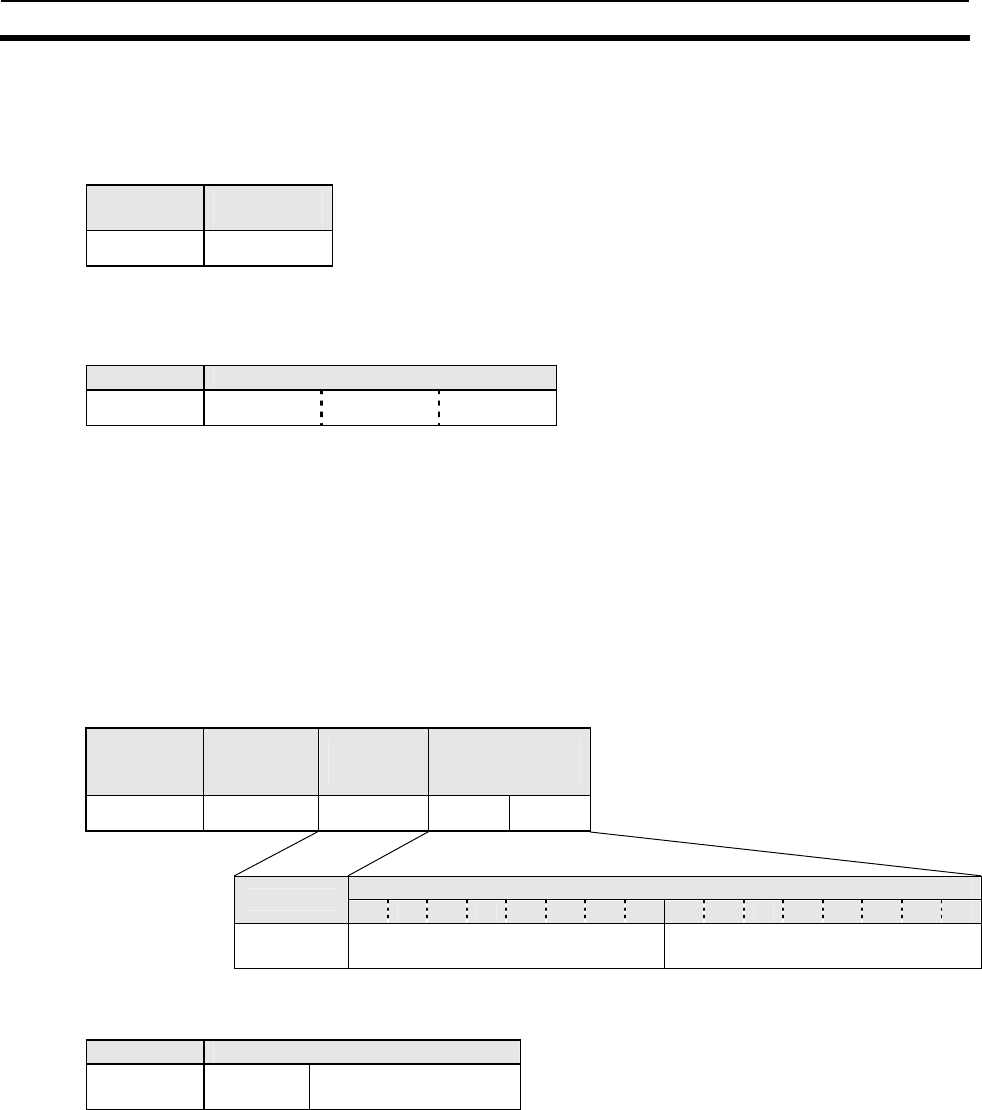
4-3 Commands and Responses
Section 4-3
4-12
4) Read UID (SNR)
Use this command to read the serial numbers from the tags.
Command
Command Communica-
tions option
35 Hex
Response
The response returns the UID (SNR) read and the end code (normal end: 00).
End code UID (SNR)
00 Hex Data 1 ・・・ Data 8
5) Set write-protection to Tag
Use this command to write-protect tags.
The maximum number of pages which can be write-protected in one operation is one bank, and
write-protecting pages across banks is impossible.
Command
This command sends the pages to be write-protected as command data. The page specification is
achieved by setting the bit corresponding to each page to ON. When performing reading only, all the
page specifications are set to OFF.
Command
Communi-
cations
option
Bank
specification
Page
specification
39 Hex
Page specification (settable value)
Bank F E D C B A 9 8 7 6 5 4 3 210
00 Hex to
0F Hex 00 to FF Hex 00 Hex to FF Hex
Response
The response returns the setting status for write-protection and the end code (normal end: '00').
End code Setting status
00 Hex Bank speci-
fication Page specification
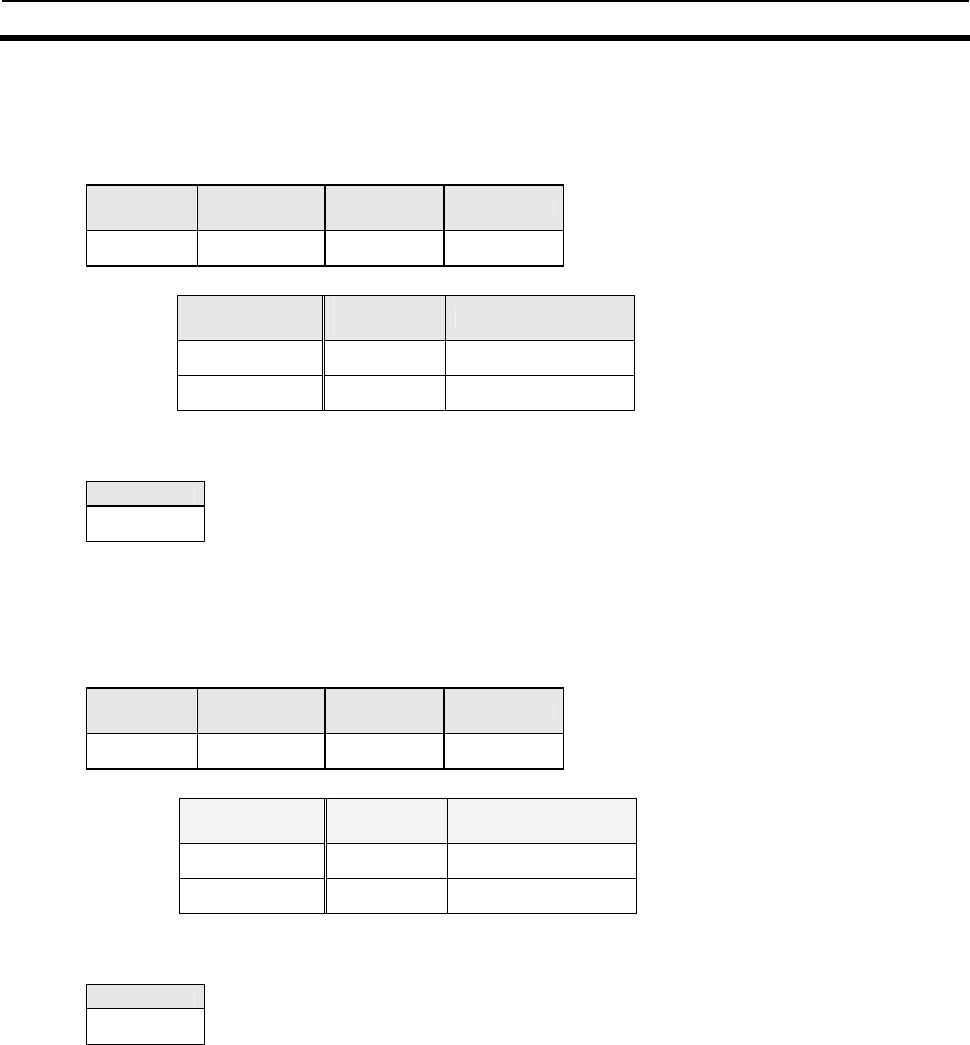
4-3 Commands and Responses
Section 4-3
4-13
6) Write, Lock AFI
Use this command to change or lock tag AFI.
Command
Command Communica-
tions option
Process
option Data
36 Hex
Process
option Data
Write AFI 01 HEX AFI = 00 to FF(Hex)
Lock AFI 02 Hex 00 Hex
Response
The response returns the end code (normal end: ‘00’).
End code
00 Hex
7) Write, Lock DSFID
Use this command to change or lock tag DSFID.
Command
Command Communica-
tions option
Process
option Data
37 Hex
Process
option Data
Write DSFID 01 Hex AFI = 00 to FF(Hex)
Lock DSFID 02 Hex 00 Hex
Response
The response returns the end code (normal end: ‘00’).
End code
00 Hex
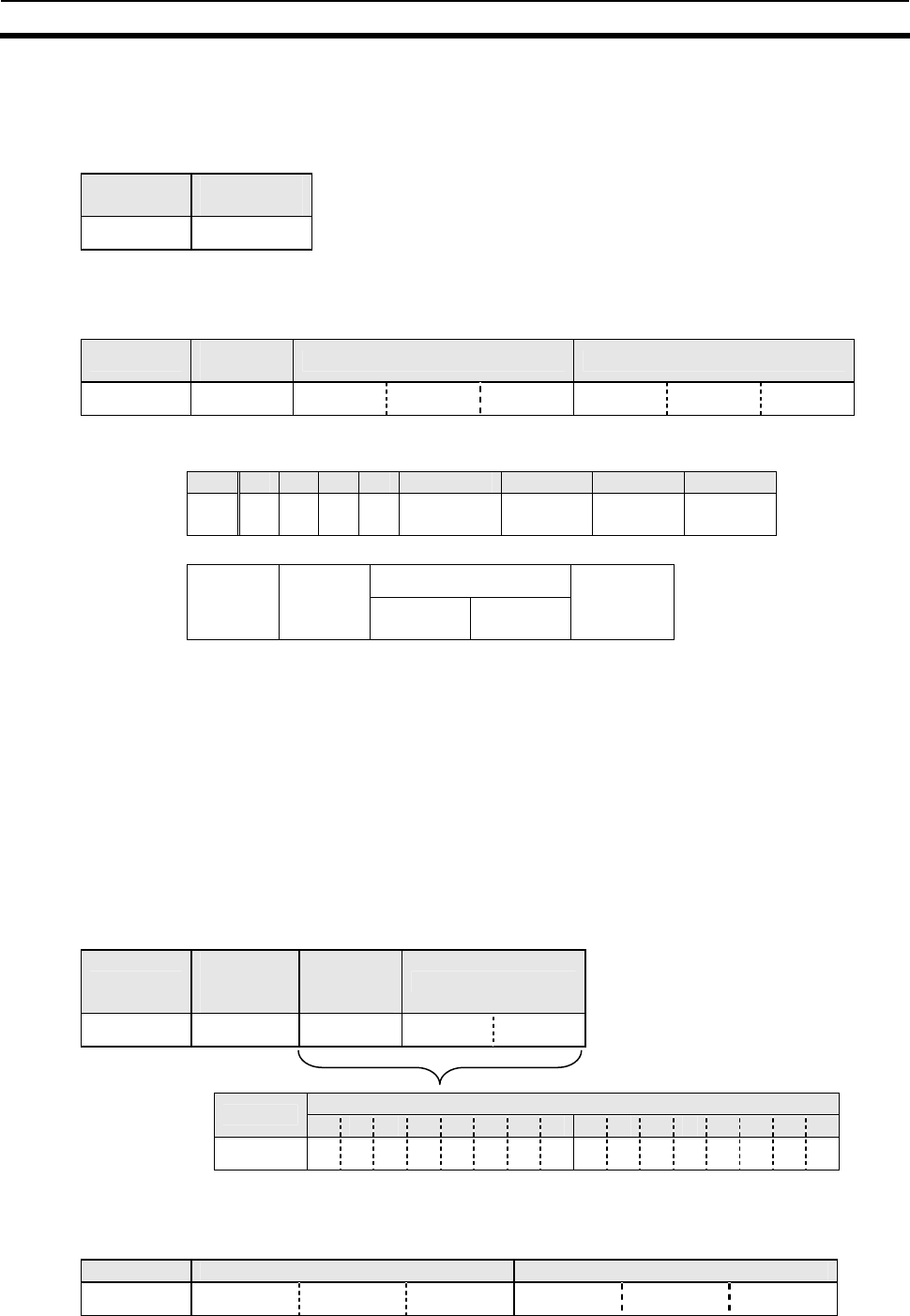
4-3 Commands and Responses
Section 4-3
4-14
8) Read Tag Info
Use this command to read tag system information.
Command
Command Communica-
tions option
3A Hex
Response
The response returns the information flag, UID, the information data, and the end code (normal end:
'00'). The data returned in the information data is changed with the information flag.
End code Informa-
tion flag UID Information
00 Hex Data 1 ・・・ Data 8 Data 1 ・・・ Data n
・Information flag
Bit 7 6 5 43 2 1 0
0 0 0 0 IC infor-
mation
Memory size
AFI DSFID
・Information (variable data length)
VICC memory size
DSFID AFI Number of
blocks
Block
length
IC informa-
tion
*Only information with the bit set by the information flag is stored.
*Number of blocks = 00h (1 block) to FFh (256 block)
*Block length = 00h (1 byte) to 1Fh (32 byte)
9) Read UID & Data
Use this command to read UID and data from the tags simultaneously. Data can be read from a
user-specified page.
The maximum number of pages which can be read in one operation is one bank (16 pages), and
reading pages across banks is impossible.
Command
This command sends the pages to be read as command data. The page specification is achieved by
setting the bit corresponding to each page to ON.
Command
Communi-
cations
option
Bank
specifica-
tion
Page specification
41 Hex
Page
Bank F E D C B A 9 8 7 6 5 4 3 2 1 0
00 to 0F
Response
The response returns the UID and data read and the end code (normal end: 00). The read data is
returned sequentially in the order of the pages specified.
End code UID Read data*
00 Hex Data 1 ・・・ Data 8 Data 1 ・・・ Data n
* Number of read data n = Number of specified pages × page unit (4 byte)
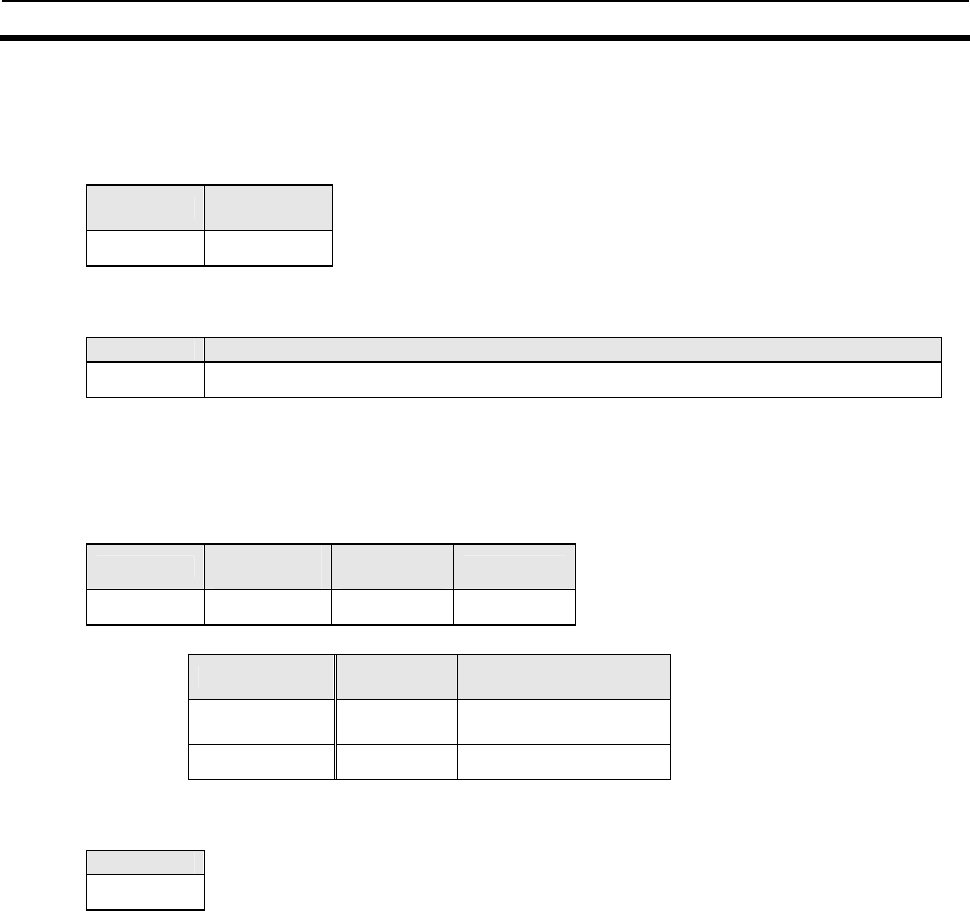
4-3 Commands and Responses
Section 4-3
4-15
10) EAS Alarm Command
Use this command to request EAS data to the tags.
Command
Command Communica-
tions option
42 Hex
Response
The response returns the EAS data read and the end code (normal end: 00).
End code EAS data
00 Hex F4CD460EABE509FE178D011C4B81926E415B5961F6F5D10D8F398B48A54EECF7h
11) Set EAS Command
Use this command to enable/disable and lock EAS to the tags.
Command
Command Communica-
tions option
Process
option Data
43 Hex
Process
option Data
Enable EAS 01 Hex 00 HEX: disabled/01
HEX: enabled
Lock EAS 02 Hex 00 Hex
Response
The response returns the end code (normal end: ‘00’).
End code
00 Hex

4-3 Commands and Responses
Section 4-3
4-16
MEMO
5-1
SECTION 5
Characteristics Data (Reference)
5-1 Communications Distance (Reference)................................................................5-2
5-2 Diagram of Communications Range (Reference)................................................5-3
5-3 Communications Time (Reference) ......................................................................5-6
5-3-1 Communications time ............................................................................................5-6
5-3-2 TAT (Turn Around Time) ........................................................................................5-8
5-4 Effects of Metal Backing Plate (Reference)..........................................................5-9
5-5 Mutual Interference (Reference)............................................................................5-10
5-6 Voltage Effects (Reference) ...................................................................................5-11
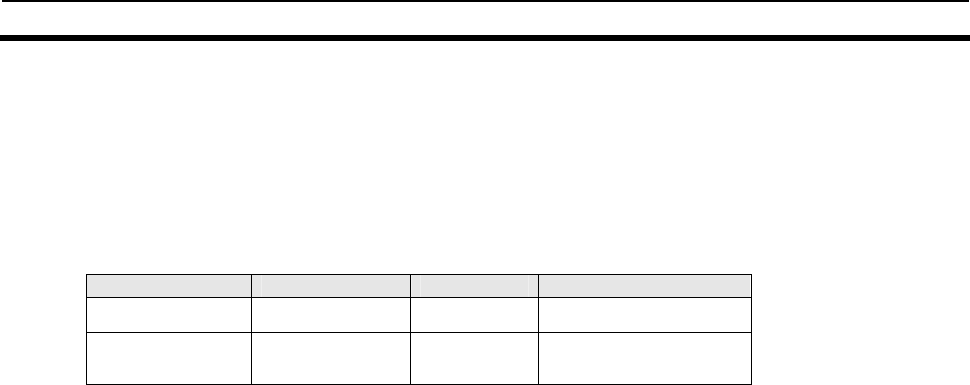
5-1 Communications Distance (Reference) Section 5-1
5-2
5-1 Communications Distance (Reference)
The communications distance is given in the following table. The communications distance changes,
however, depending on the tag inlet forming material, and the tag and R/W Module mounting
conditions, so check the conditions of use beforehand.
1) I-CODE SLI Tag Inlet and Tag
Model Specifications Shape V720S-HMC75
V720S-D13P30 Laminate card 86×55mm 0 to 65 mm
V720S-D13P40 Plastic card ISO card
86×55mm 0 to 45 mm
Note The communications distances shown above are based on the use of standard tags at a
temperature of 25°C and a supply voltage of 5.0 V.
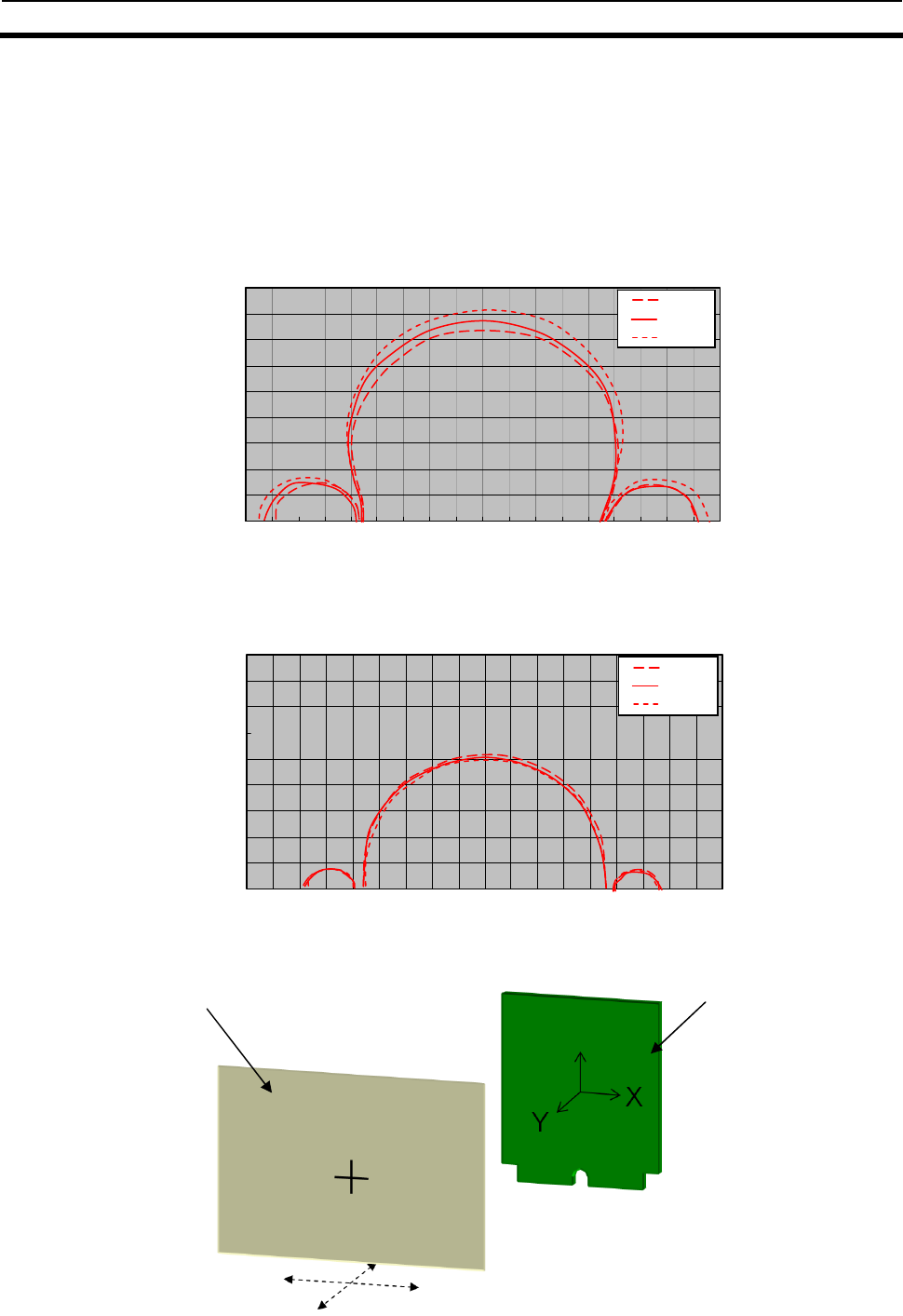
5-2 Diagram of Communications Range (Reference)
Section 5-2
5-3
5-2 Diagram of Communications Range (Reference)
A diagram of the V720S-HMC75 communications range is given below. The communications range
differs, however, depending on the mounting conditions and the environmental conditions.
1) I-CODE SLI Tag
V720S-HMC75
The tag movement direction
Tag
Tag:V720S-D13P30
0
10
20
30
40
50
60
70
80
90
-90 -80 -70 -60 -50 -40 -30 -20 -10 0 10 20 30 40 50 60 70 80 90
X-direction(mm)
Y-direction(mm)
25°C
55°C
-10°C
Tag:V720S-D13P40
0
10
20
30
40
50
60
70
80
90
-90-80-70-60-50-40-30-20-100102030405060708090
X-direction(mm)
Y-direction(mm)
25°C
55°C
-10°C
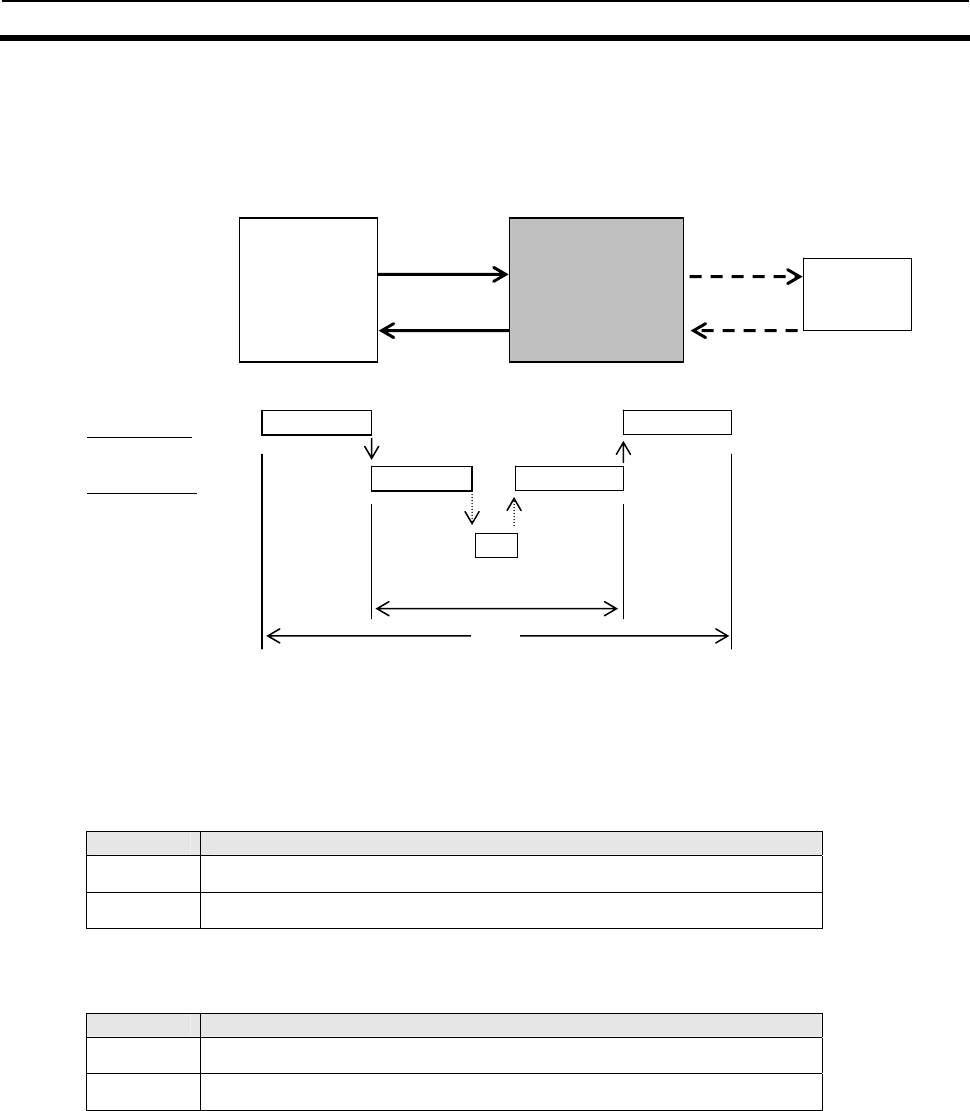
5-3 Communications Time (Reference)
Section 5-3
5-4
5-3 Communications Time (Reference)
The communications time given below includes the communications time and TAT (Turn Around Time).
Control Unit
R/W Module
5-3-1 Communications time
The communications time is the communications processing time between the R/W Module and the
tags. The communications time differs depending on the number of pages being written or read.
Specifying Number of Pages to Be Written/Read Continuously
Formulas
Command Communications time (ms)
Read T = 1.3N + 6.0
Write T = 13.6N + 15.5
N: No. of pages processed
Not Specifying Number of Pages to Be Written/Read Continuously
Formulas
Command Communications time (ms)
Read T = 1.3N
R
+6.0
Write T = 12.3N
W
+ 1.3N
R
+ 15.5
NR = (Maximum number of specified pages – minimum number of specified pages) + 1
NW = No. of pages written
Command 1
Response 1
Control
Unit
Reader/Writer
Module
V720S-HMC75
V720 series
Tag
Command 2
Response 2
Command 1 Response 1
Command 2 Response 2
Tag
Communications Time
TAT

5-3 Communications Time (Reference)
Section 5-3
5-5
Example: Reading data from pages 1, 5, and 9
T = 1.3 × (9 - 1 + 1 ) + 6.0 = 17.7 ms
Example: Reading data from pages C, 5, and 9
T = 1.3 × (12-5+1) + 6.0 = 16.6ms
Example: Writing data to pages 2, 4, 9, and 10
T = 12.3 × 4 + 1.3 × ( 10 - 2 + 1 ) + 15.5 = 76.4ms
Communications Time Calculation Conditions
•
Communications mode: Single Trigger Mode
•
Communications errors must not occur, such as due to noises.
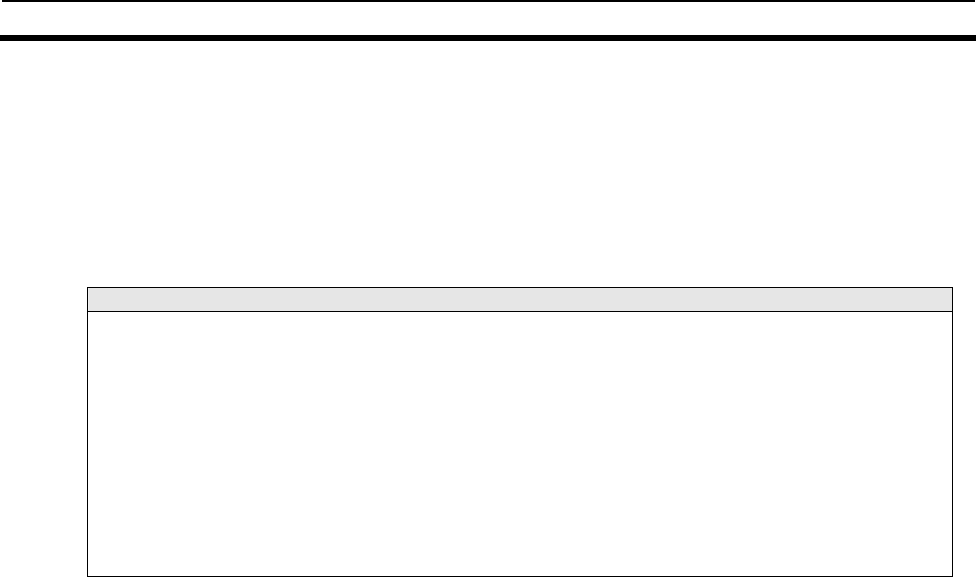
5-3 Communications Time (Reference)
Section 5-3
5-6
5-3-2 TAT (Turn Around Time)
The TAT is the time taken from when the host control unit sends a command to the R/W Module, to
when a response is received and completed.
The time differs depending on the baud rate and the communications control method setting.
Example of TAT Calculation
Example: Reading from page 0 to page 4
I-CODE SLI
(1)During command send
8 [byte] × 10 [bits] / 9600 [bps] × 1000 [ms/s] ≈ 8.33ms
(2)During communications
6.5 + 6.0 = 12.5ms
(3)During reception of response
24 [byte] × 10 [bits] / 9600 [bps] × 1000 [ms/s] = 25ms
The TAT in to the above example is (1) + (2) + (3) = 45.83 ms.
The calculations are performed according to the following conditions.
•
Communications mode : Single Trigger Mode
•
Baud rate : 9,600 bps
•
Commands sent from the host control unit are sent continuously without spaces between the
characters.
•
Communications errors must not occur, such as due to noises.
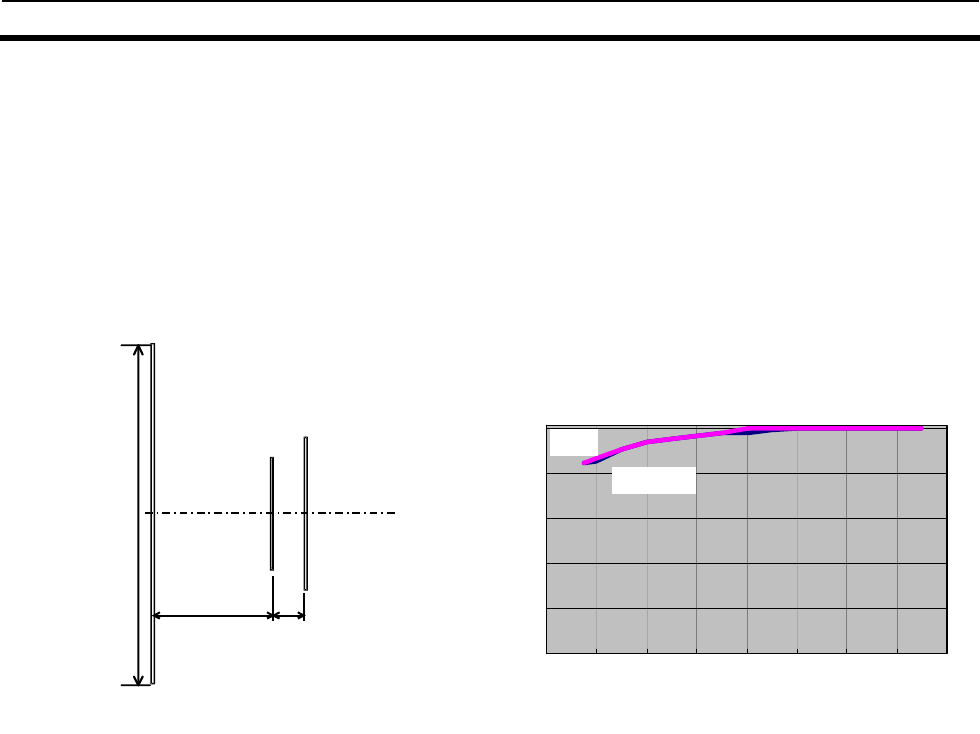
5-4 Effects of Metal Backing Plate (Reference)
Section 5-4
5-7
5-4 Effects of Metal Backing Plate (Reference)
When there is a metal backing plate to the R/W Module, communications distance with the tags is
reduced. The data given below is for aluminum and iron.
V720S-HMC75
<Effects of Metal Backing Plate>
Measuring conditions
Aluminum: 300 × 300 × t1.5 mm
Iron: 300 × 300 × t1.0 mm
Metal plate
Tag
X
Y
300mm
0%
20%
40%
60%
80%
100%
0 20 40 60 80 100 120 140 160
Di st ance f r om met al backi n
g
plate
(
mm
)
Co mmuni cat i ons di st ance
r educt i on ( %)
Iron
A
luminu
m
V720S
-HMC75
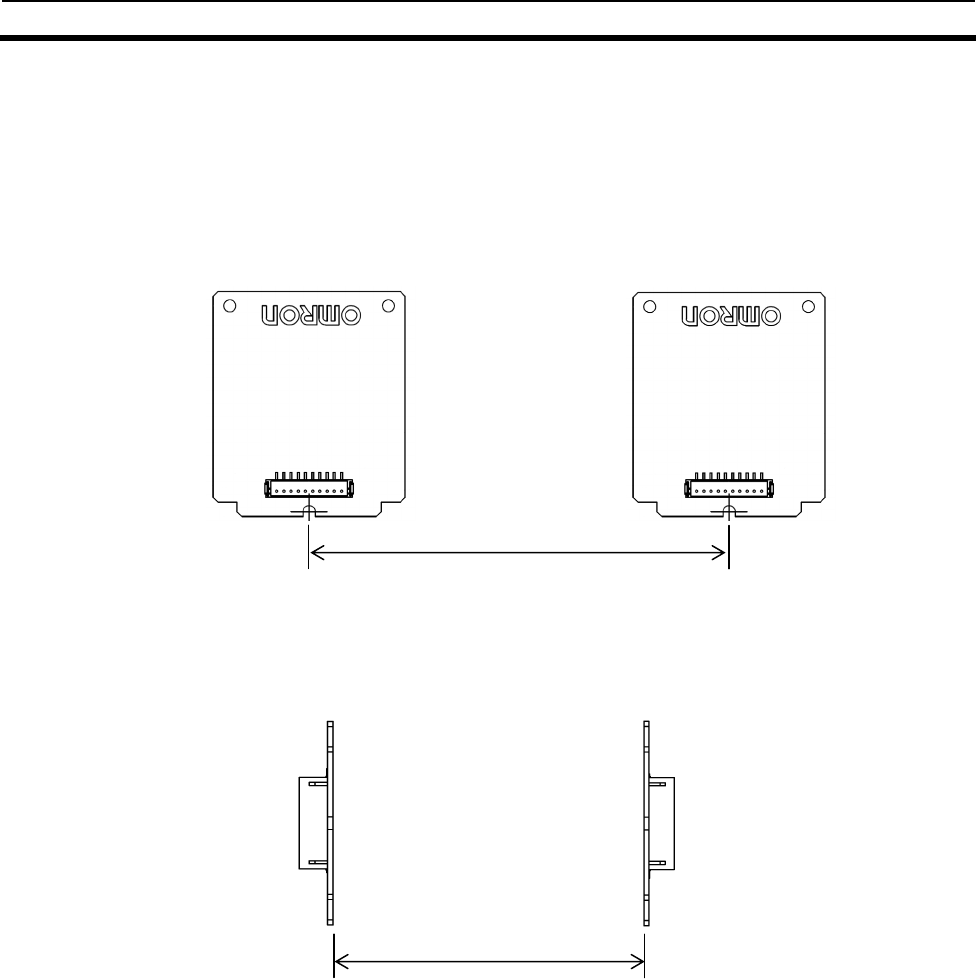
5-5 Mutual Interference (Reference)
Section 5-5
5-8
5-5 Mutual Interference (Reference)
If using multiple R/W Modules near to each other, space the Modules as shown below to prevent
malfunction due to mutual interference.
Parallel Antennas
Facing Antennas
Note Mutual interference depends on the operating environment of the R/W Module and tags, so
be sure to check the environment before application.
100mm Min
300mm Min
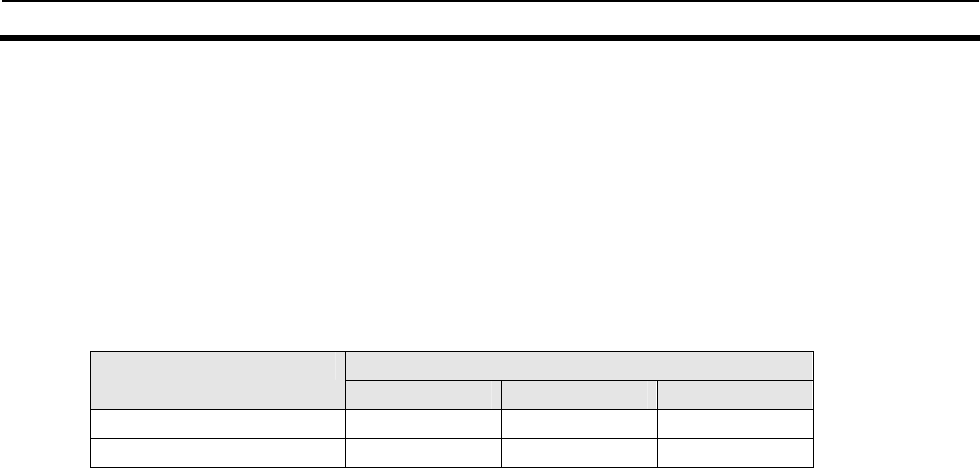
5-6 Voltage Effects (Reference)
Section 5-6
5-9
5-6 Voltage Effects (Reference)
The R/W Module read/write communications distances depend on the value of the power supply
voltage.
Refer to the following values when using the R/W Module. The fluctuation in the communications
range is 100% at a distance corresponding to 5-V power supply.
• V720S-HMC75
Rate of change in communications distance (%) Tag format
4.5V 5.0V 5.5V
V720S-D13P30 96 100 104
V720S-D13P40 94 100 106

Revision History
A manual revision code appears as a suffix to the manual number on the front cover of the manual.
Manual No. SRFM-014A
Revision code
The following table outlines the changes made to the manual during each revision. Page numbers refer to the
previous version.
Revision code Date Revised content
A December, 2008 The first edition

Manual No. SRFM-014A
Note: Specifications subject to change without notice. Printed in Japan
Authorized Distributor:
Up-to-date information on RFID Systems can be accessed at OMRON's web site at
http://www.omronrfid.com/
OMRON CORPORATION
RFID BUSINESS DEVELOPMENT DEPARTMENT
3-4-10 Toranomon Minato-ku,
Tokyo, 105-0001 Japan
Tel: (81)3-3436-7317/Fax: (81)3-3436-7387
Regional Headquarters
OMRON ELECTRONICS LLC
One Commerce Drive, Schaumburg, IL 60173
U.S.A.
Tel: (1)888-303-RFID (7343)/ Fax: (1)847-925-1260
OMRON EUROPE B.V.
Wegalaan 57, NL-2132 JD Hoofddorp
The Netherlands
Tel: (31)23-568-1200/Fax: (31)23-568-1222
OMRON ASIA PACIFIC PTE. LTD.
83 Clemenceau Avenue,
#11-01, UE Square,
239920 Singapore
Tel: (65)835-3011/Fax: (65)835-2711
OMCC: OMRON (CHINA) CO., LTD.
Rm.302, AZIA Center, 1233 Lujiazui Ring Road
Pudong New Area, Shanghai 200120, PRC.
Tel: (86)21-5888-1666
Fax: (86)21-5888-7633/7933